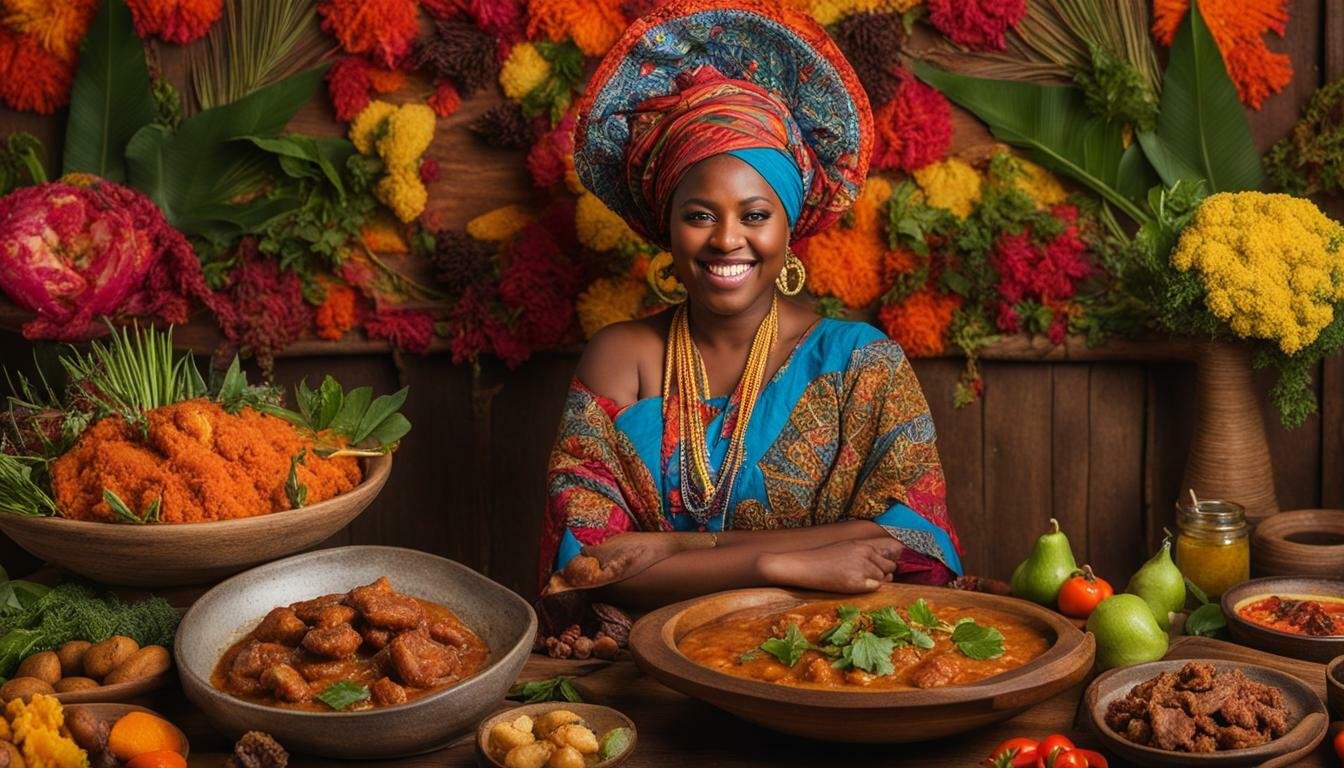Take Me to the Recipes
Forget bland savanna fare – Botswana’s cuisine is a vibrant explosion of flavors, waiting to tantalize your taste buds and pique your cultural curiosity. Imagine yourself strolling through bustling markets bursting with colorful fruits and vegetables, the air thick with the aroma of savory spices. This isn’t a dream; it’s your entry point to a culinary adventure unlike any other!
More than just delicious dishes, Botswana’s food tells a story – a story of resilience, innovation, and deep connection to the land. From succulent Seswaa, the national dish featuring melt-in-your-mouth shredded beef, to refreshing Mageu, a fermented drink made with leftover porridge, each bite embodies the spirit of the Batswana people.
But wait, there’s more! Beyond iconic staples, you’ll discover a wealth of hidden gems:
- Wild delicacies: Savor the unique taste of Mopane worms, a cherished protein source for centuries.
- Sun-kissed melons: Experience the refreshing sweetness of Lerotse, a melon native to Botswana’s arid climate.
- Spicy stews: Immerse yourself in the fiery flavors of Seswaa sauce, packed with fresh ginger and chilis.
- Comforting porridges: Warm your soul with Bogobe, a thick maize porridge often mixed with melon for a unique twist.
So, are you ready to embark on a taste bud expedition through Botswana? Buckle up, grab your virtual fork, and prepare to be surprised and delighted by the hidden gems waiting to be discovered in every dish!
Ready to explore? This article will:
- Unveil the fascinating history and influences that shaped Botswana’s cuisine.
- Showcase a mouthwatering selection of must-try dishes.
- Dive deeper into the unique ingredients and flavors that make it special.
- Offer tips for recreating some of these culinary delights in your own kitchen.
Join us on this delicious journey and discover why Botswana is a true foodie paradise!
Take Me to the Recipes
Botswana Cuisine – Key Takeaways
- Botswana cuisine has its roots in tradition and emphasizes fresh ingredients and simple yet flavorful dishes.
- Traditional Batswana dishes pass down through generations and hold cultural significance.
- Botswana cuisine has vibrant flavors and unique combinations.
- Indigenous foods play a significant role in Botswana cuisine, showcasing the country’s rich biodiversity.
- Regional variations offer unique culinary specialties, from hearty dishes in the Kalahari Desert to fish-based delicacies in the Okavango Delta.
Where is Botswana?

Botswana is a landlocked country in southern Africa. It is bordered by South Africa to the south and east, by Namibia to the west, and by Zimbabwe to the east.


Index of Contents
- Take Me to the Recipes
- More Articles
- Interesting Facts About Botswana
- The History of Botswana and how it has affected the Cuisine
- How the Geography and Climate has Affected Botswanan Cuisine
- Embracing Botswana’s Culinary Traditions
- Botswana Cuisine – Cooking Techniques and Ingredients
- Botswana Cuisine – African Recipes Influence
- Botswana Cuisine – The Role of Indigenous Foods
- Exploring Botswana’s Street Food
- Botswana Cuisine: A Culinary Adventure
- Popular Botswana Food
- How Healthy is the Food in Botswana?
- Botswana Cuisine Recipes You Can Try at Home
- Conclusion
- FAQ’s
You may also be interested in the following Articles
- North and South American Cuisine – A Culinary Expedition
- Europe Cuisine: Savor the Continent’s Best Culinary Secrets!
- African Cuisine: Discover the Bold Flavors & Global Charm!
- Asian Cuisine Unlock its Secrets – Taste, Health & Global Influence!
Savor iconic Botswanan Food – Click on each tantalizing picture to open up the Recipe


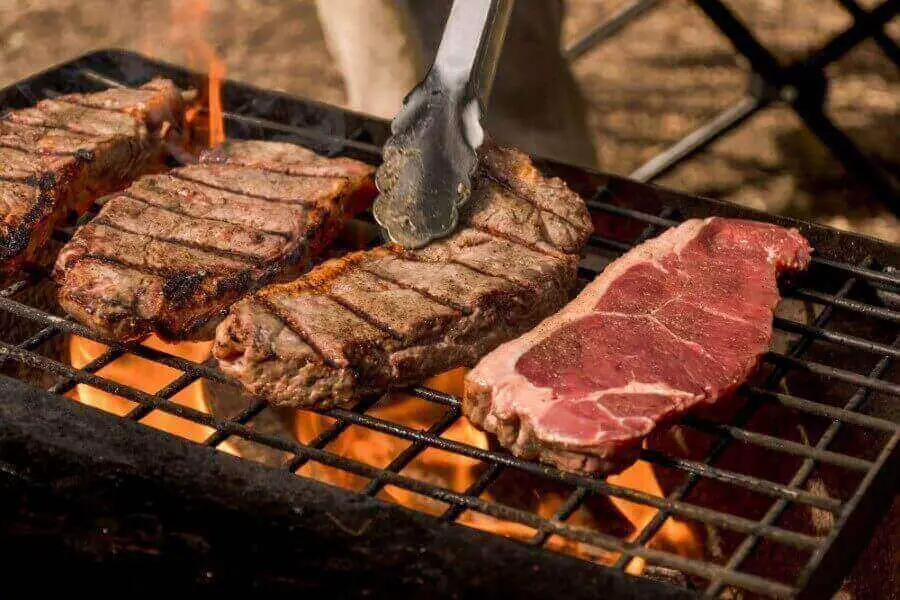
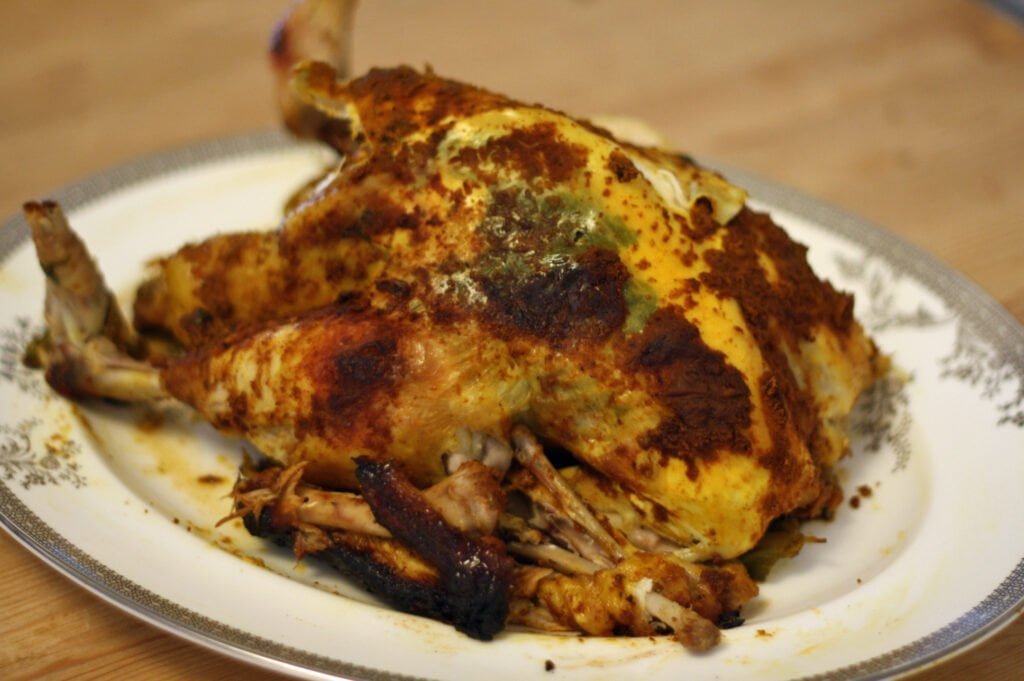
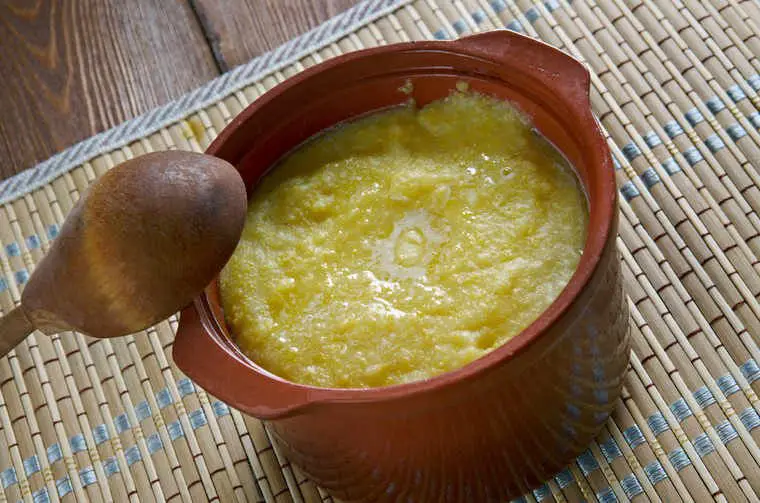
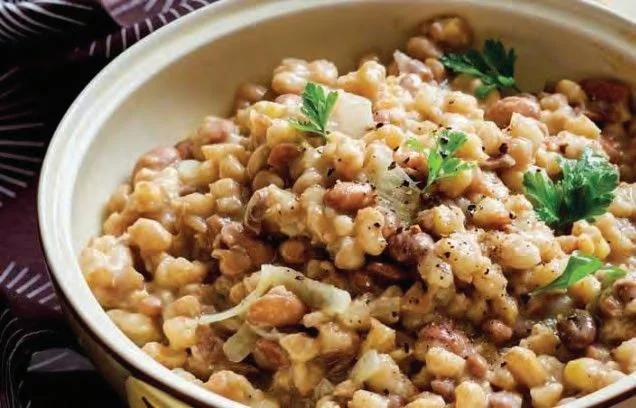
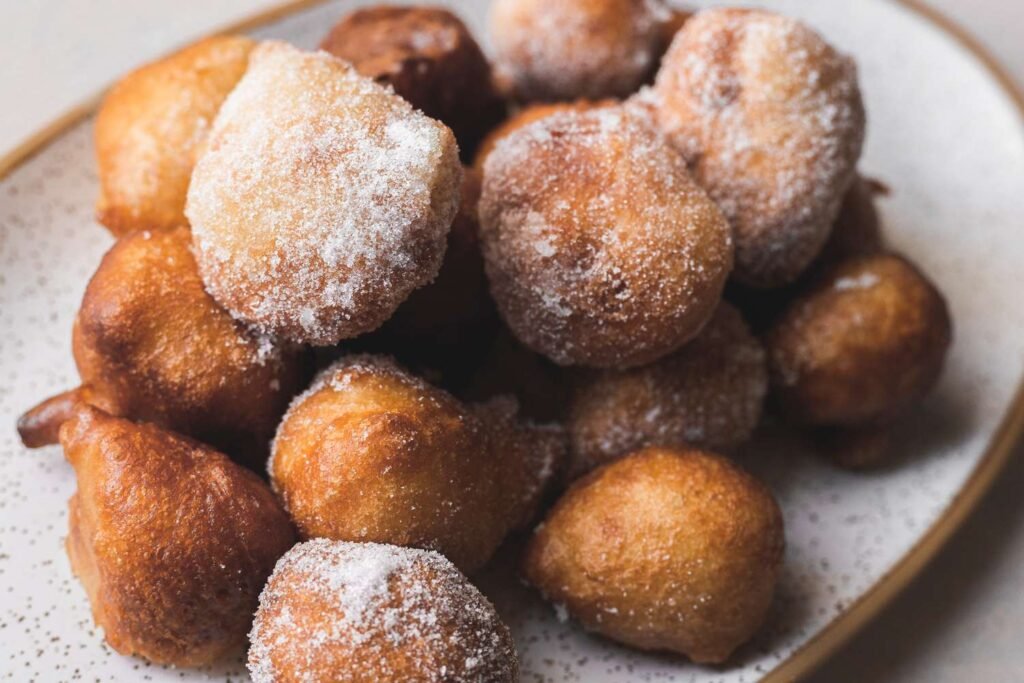
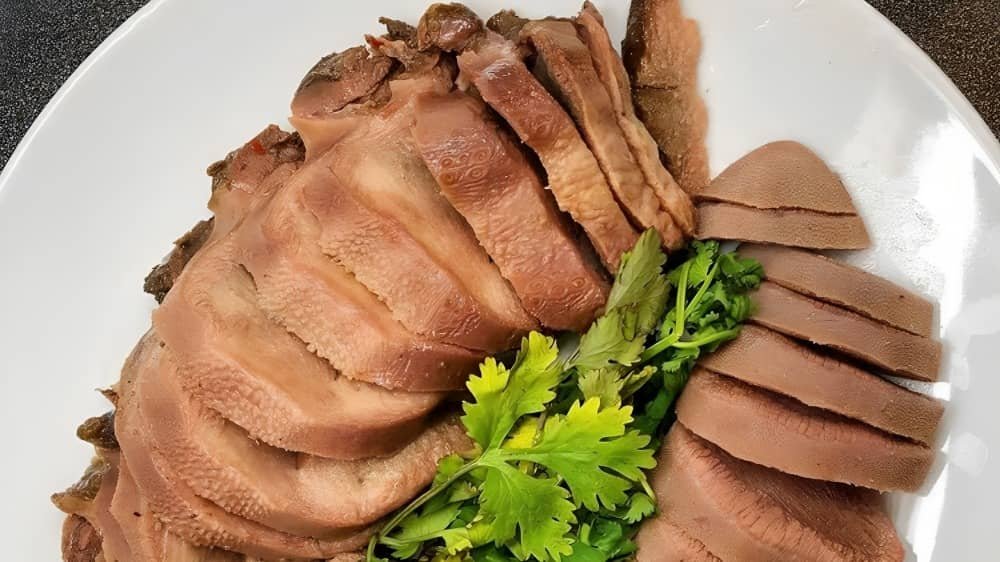

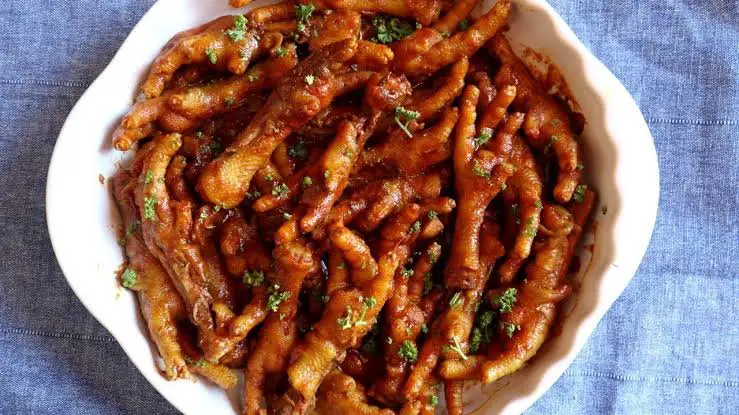

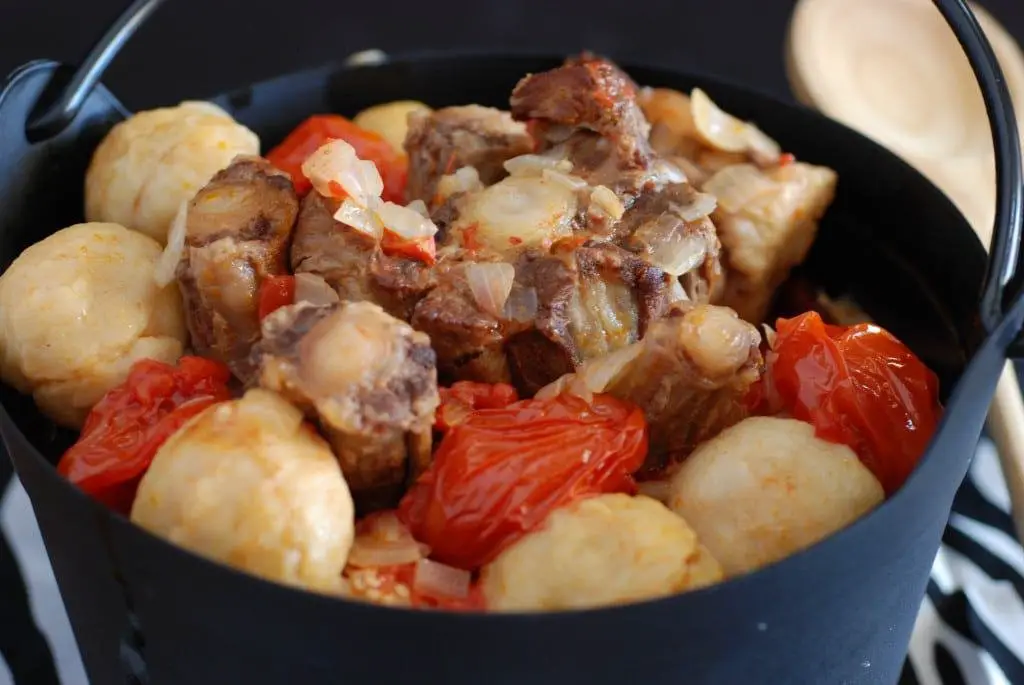

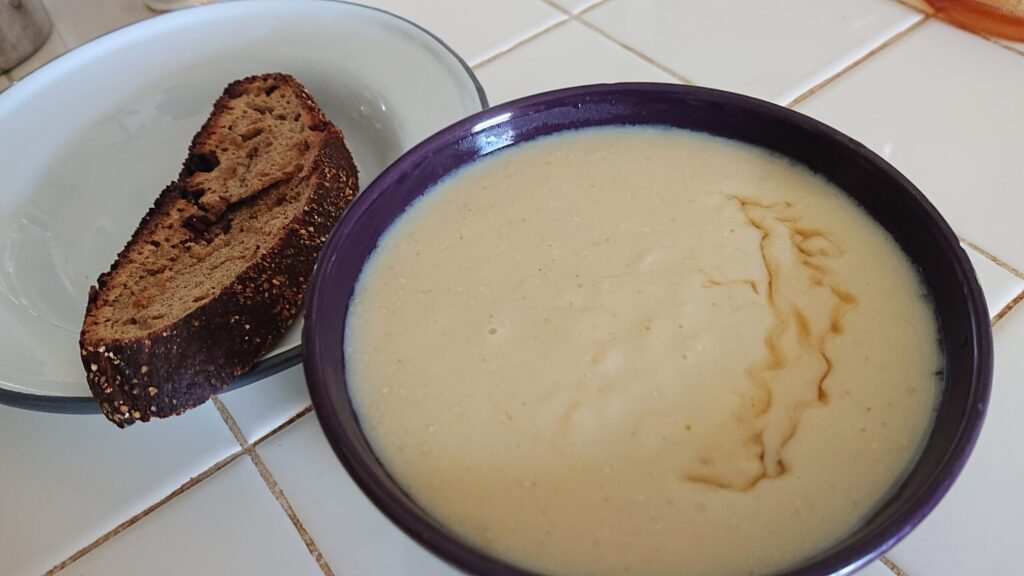
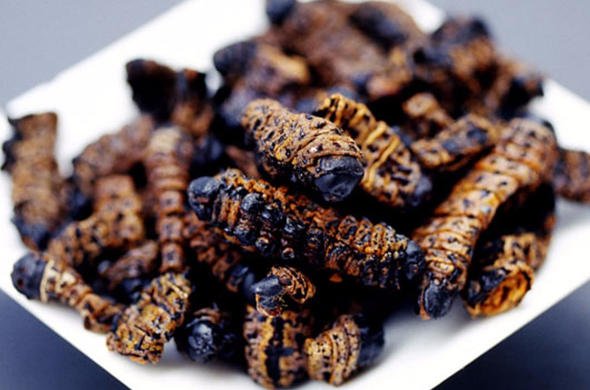

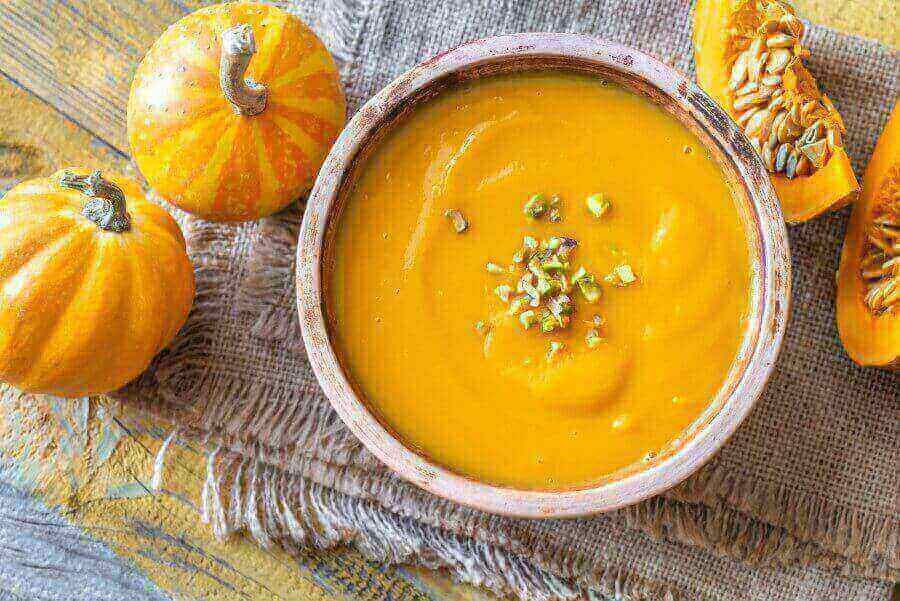
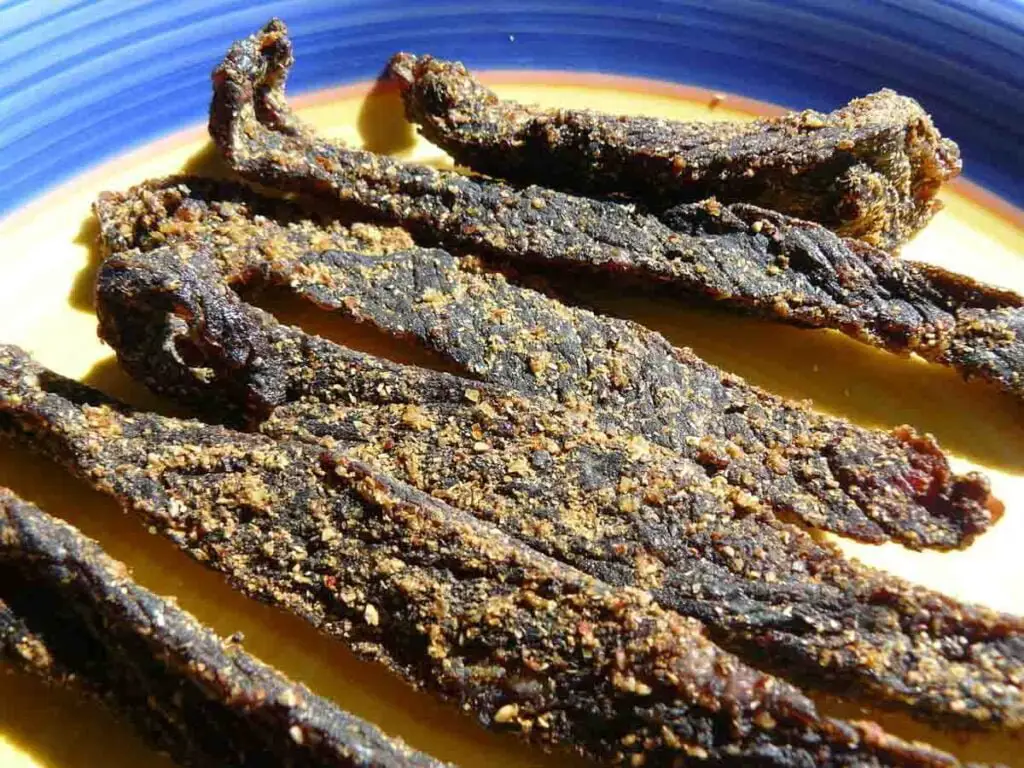
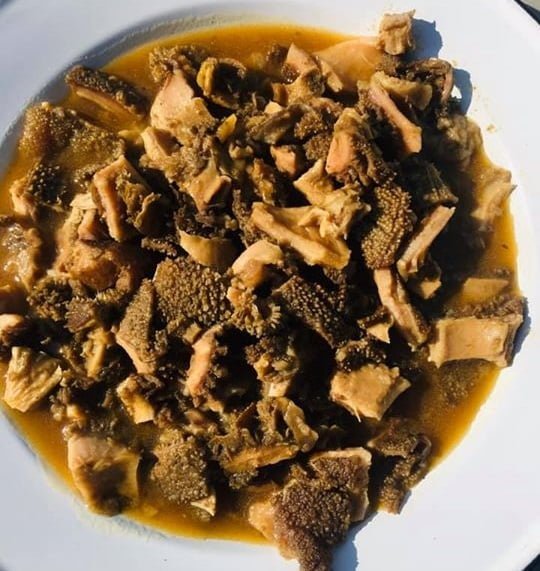

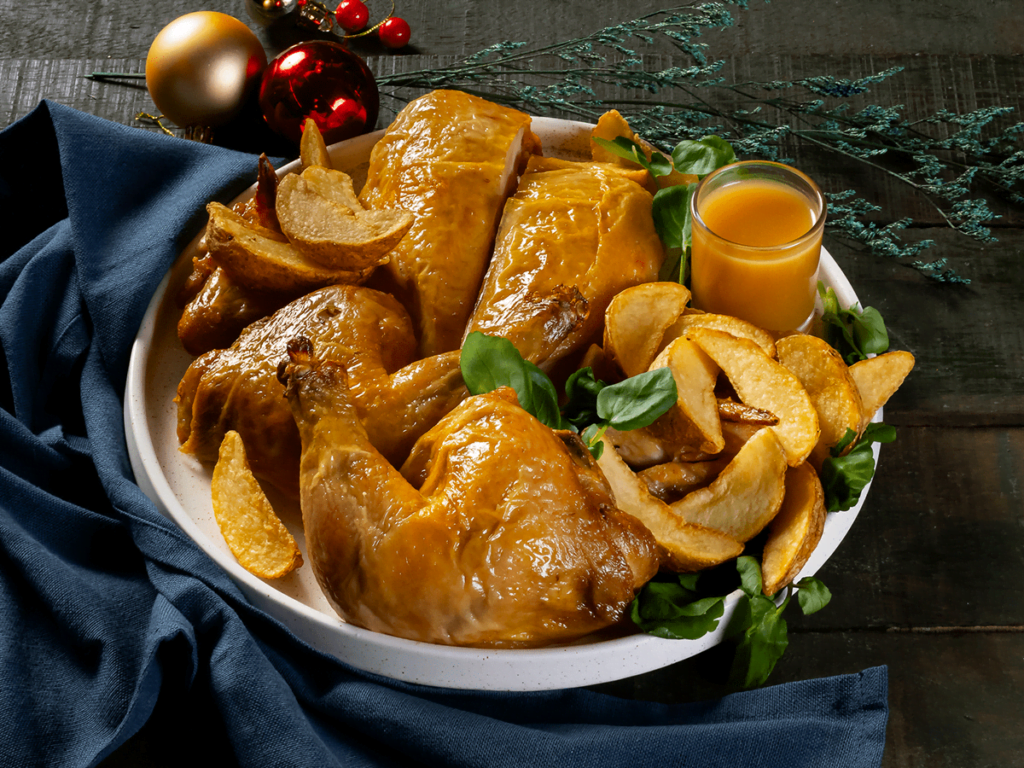
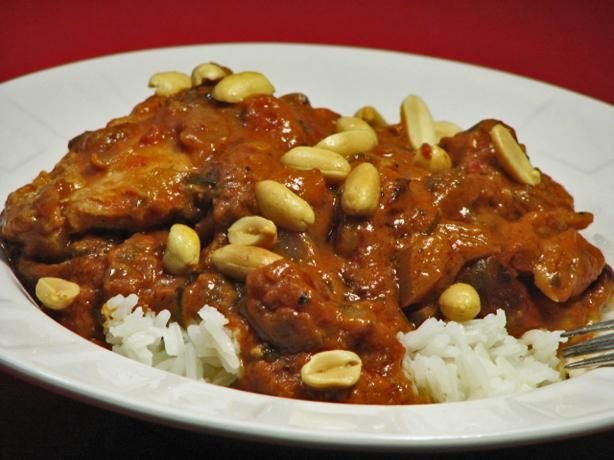
Interesting Facts About Botswana
Land of No Fences

Botswana is known as the “Land of No Fences” due to its vast expanses of unfenced wilderness, allowing wildlife to roam freely.
Cow Currency
The traditional currency of Botswana, the pula, is named after the Setswana word for rain. Cattle, a symbol of wealth, are often used in the country’s economy.
Okavango Delta’s Mirage Islands

The Okavango Delta in Botswana creates “mirage islands” due to its unique hydrology, where shimmering reflections make it seem like islands exist when they don’t.
Chobe National Park Elephant Paradise
Chobe National Park is home to the world’s largest concentration of elephants, offering breathtaking scenes of these majestic creatures.
Kgotla Justice System
Botswana incorporates a traditional justice system called Kgotla, where community members gather to discuss and resolve disputes, emphasizing communal harmony.
Political Stability Success Story
Botswana has maintained political stability since gaining independence in 1966, making it a rare success story in Africa.
Wildlife in Currency Design

Botswana’s coins feature images of wildlife, reflecting the country’s diverse wildlife.
Strawberry Trees of Makgadikgadi Pans
In Makgadikgadi Pans, there are peculiar “strawberry trees,” white and mineral-covered formations that resemble strawberry plants.
Botswana’s Success in HIV/AIDS Fight
Botswana has been praised globally for its effective response to HIV/AIDS, implementing widespread testing and access to antiretroviral treatment.
The History of Botswana and how it has affected the Cuisine

Embark on a delicious exploration of Botswana’s history, where each era has left its mark on the country’s unique cuisine!
Before the Colonizers (Before 1885)
Imagine life for the indigenous Batswana people, long before European influence. Their meals were built on locally available ingredients, with sorghum and maize forming the base of many dishes.
The land provided sustenance through wild harvesting, including delicacies like mophane worms that are still enjoyed today. Did you know that watermelons, a beloved summer fruit, are believed to have originated in Botswana!
Colonial Encounters and Food Fusion (1885–1966)
Fast forward to the British Protectorate era, when Botswana was known as Bechuanaland. New ingredients and practices arrived with the colonizers. Wheat, rice, and other cereals joined the pantry, while beef became a central element thanks to the thriving cattle industry.
This period also saw a unique cultural exchange, as European settlers and missionaries brought their culinary traditions, leading to a fascinating fusion of local and foreign flavors.
Post-Independence: Celebrating Local Delights (1966–Present)
Today, Botswana’s cuisine proudly showcases its heritage. Take Seswaa, the national dish, featuring salted, mashed-up meat, a testament to the country’s rich beef tradition.
Another beloved dish is Bogobe, a thick maize porridge often mixed with melon, offering a comforting and flavorful combination. Craving something street-style? Look no further than Vetkoek, deep-fried dough balls bursting with deliciousness.
But don’t forget the abundance of river fish, like catfish, or refreshing fruits like watermelons and the locally grown Lerotse melon. Food preservation plays a vital role, with techniques like drying meat (digwapa) and bean leaves ensuring food security throughout the year.
And to quench your thirst, try Mageu, a refreshing drink made from leftover porridge, a testament to resourceful culinary practices.
References
- Q-files: The Great Illustrated Encyclopedia
- Botswana cuisine – Wikipedia.
- en.wikipedia.org
- journalofethnicfoods.biomedcentral.com
- discoverafrica.com
- foreignfork.com
- botswana.co.za
- acanela.com
- sahistory.org.za
How the Geography and Climate has Affected Botswanan Cuisine

Imagine the vast savannas stretching under a hot sun, the Kalahari’s arid whisper, and the vibrant life that thrives despite it all. This is the landscape that shapes Botswana’s unique cuisine, a delicious tapestry woven from geography, climate, and deep tradition.
Let’s explore how these elements have seasoned the nation’s culinary experience:
Landlocked Bounty
Surrounded by neighbors, Botswana’s access to certain ingredients might be limited, fostering a focus on local resources. Wild harvests like mophane worms (a cherished delicacy) and wild fruits add a distinct character to the table.
Savannas & Kalahari’s Embrace
These vast regions dictate what flourishes. Traditional crops like sorghum and pearl millet, perfectly adapted to the dry climate, form the base of many dishes like the comforting bogobe (porridge).
Hot & Arid: Challenges Become Culinary Creativity

The climate demands resourcefulness. Dishes are often prepared with minimal water, and preservation techniques like drying meat (digwapa) ensure food security.
Cattle Culture: A Beefy Tradition
Botswana’s strong cattle culture shines through in its cuisine. Seswaa, the national dish featuring slow-cooked, shredded beef, is a must-try, while other dishes like vetkoek (deep-fried dough balls) or river fish offer variety.
Resourcefulness: Turning Scarcity into Flavor
The Batswana people have mastered adapting to their environment. Melons, like the locally grown lerotse, thrive in the dry climate, while Mageu, a refreshing drink made from leftover porridge, showcases their efficient use of resources.
More Than Just Food: A Story on Each Plate
Botswana’s cuisine is a testament to resilience, innovation, and a deep connection to the land. It’s a story interwoven with traditional ingredients, time-honored preservation methods, and cultural influences.
References
- Botswana: Climate risk country profile – ReliefWeb
- Geography of Botswana – Wikipedia
- Botswana – Summary | Climate Change Knowledge Portal
- Botswana – Semi-arid, Subtropical, Rainfall | Britannica
- Botswana National Climate Change Strategy 2018 – Food and Agriculture Organization
Embracing Botswana’s Culinary Traditions

As a food lover and avid traveler, the unique flavors of different cultures fascinate me. Botswana’s culinary delights have piqued my interest with their emphasis on fresh ingredients, simple yet flavorful dishes, and a rich food culture rooted in tradition.
Traditional Batswana dishes pass down through generations and hold a significant cultural significance. In Botswana, food is not just fuel for the body but an expression of love, respect, and community. It is a way of bringing people together and celebrating life’s milestones.
The Botswana food culture focusses on fresh ingredients, locally sourced from the land, and cooked with minimal fuss to bring out their natural flavors. Batswana dishes often include meat, such as beef, lamb, and goat, as well as wild spinach, maize meal, and beans. The use of spices is minimal, allowing the ingredients’ natural flavors to shine.
One of the most popular traditional Batswana dishes is Seswaa. Chefs mash this slow-cooked meat and mix it with a thick maize meal paste.
Morogo is another staple, made with wild spinach cooked with onion, tomato, and a dash of salt.
Let’s not forget about Polenta. This is essentially maize meal that chefs make into porridge and serve with gravy.
Despite Botswana’s traditional food being straightforward, it is anything but lacking in flavor. The dishes are hearty, filling, and nutritious, providing the necessary energy for a day of hard work.
As I continue to explore the vibrant food scene of Botswana, I am excited to learn more about the cooking techniques and ingredients that make this cuisine unique. From braising to grilling to stewing, Botswana’s cooking techniques are simple yet effective at bringing out the natural flavors of the ingredients.
Botswana Cuisine – Cooking Techniques and Ingredients

Botswana cooking uses simple yet effective techniques that bring out the natural flavors of the ingredients. The traditional Botswana food uses cooking methods such as braising, grilling, and stewing. These cooking techniques help to create dishes that are rich in flavor and aroma.
One of the key ingredients that defines Botswana cuisine is maize meal. Chefs use it to make Polenta, a staple food. Another popular ingredient is Morogo which is a wild spinach that is an ingredient of a variety of dishes.
Botswana cuisine also features a range of meat dishes, with beef being the most popular. Seswaa is one such dish that chefs prepare with slow-cooked shredded beef and serve it with thick gravy. Other meat dishes include goat, chicken, and lamb.
Botswana cooking also makes use of herbs and spices, such as ginger, garlic, and chili. These ingredients add depth and complexity to the flavor profile of the dishes.
Botswana Cuisine – African Recipes Influence
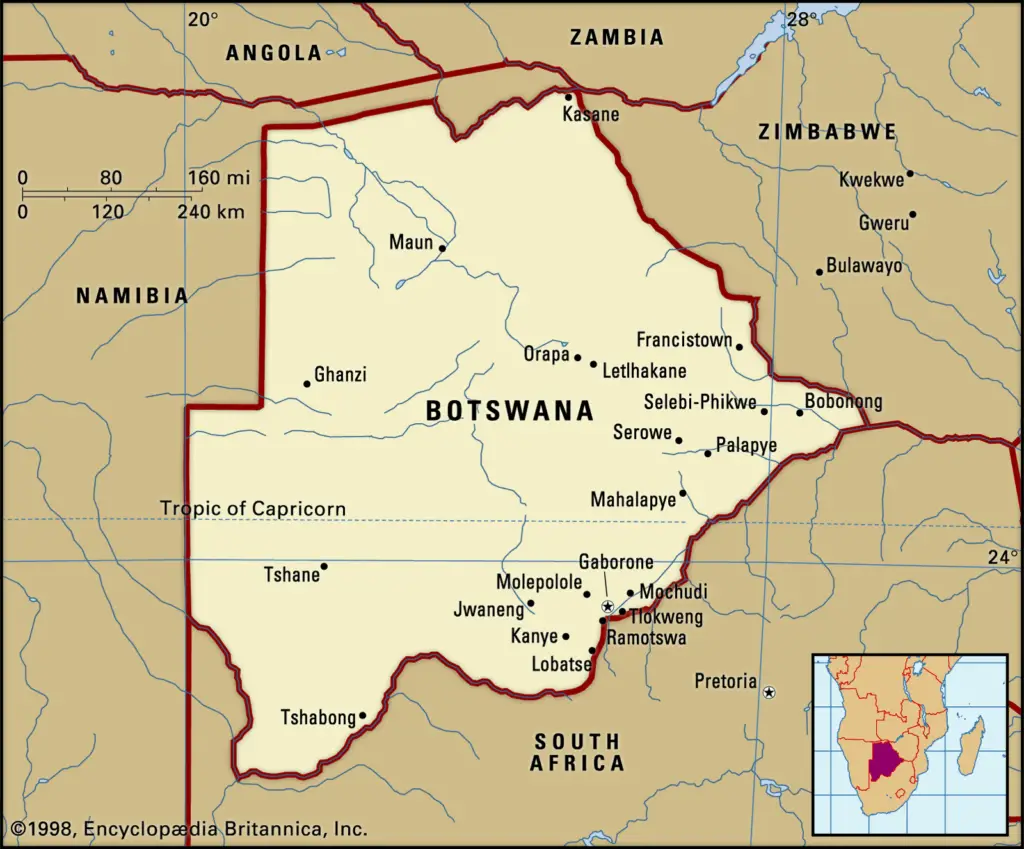
Traditional African recipes influence Botswana cuisine, with flavors and techniques borrowed from neighboring countries. African recipes emphasize the use of fresh ingredients and simple cooking methods.
For example, Pap, a thick porridge made from maize meal, is a staple in many African countries and is a popular dish in Botswana as well. Another example is Chakalaka, a spicy vegetable relish that originated in South Africa but has become a popular accompaniment to meat dishes in Botswana.
With its diverse range of ingredients and cooking techniques, Botswana cuisine is a feast for the senses. It is a testament to the country’s rich cultural heritage and is sure to delight any food lover.
What is Botswana’s National Dish?

Botswana’s national dish is Seswaa, a delicious and heartwarming dish made with salted, mashed-up meat, typically beef. The dish reflects the country’s rich cattle-raising tradition and is enjoyed widely across Botswana. Here’s a closer look at this unique cuisine:
Traditional Preparation
- Seswaa is traditionally prepared by slowly cooking large cuts of beef (like shoulder, rib, or rump) with just water and salt for several hours, often in a three-legged cast iron pot over an open fire.
- Once cooked, the meat is pounded with a mortar and pestle until it reaches a desired consistency, ranging from coarse to smooth.
Botswana Recipes

Botswana recipes are known for their rich flavors and unique combinations of ingredients. The country’s cuisine reflects its diverse cultural heritage and is influenced by neighboring countries such as South Africa and Zimbabwe.
In Botswana, traditional dishes like seswaa, a slow-cooked meat stew, and morogo, a dish made with wild spinach, are highly popular. These recipes often feature local ingredients such as sorghum, maize, and game meat, which are abundant in the region.
Many Botswana recipes also incorporate spices and flavors, like chilli peppers and ginger, that add a delightful kick to the dishes.
Botswana Cuisine – The Role of Indigenous Foods

One of the most fascinating aspects of Botswana cuisine is the prominent role that indigenous ingredients and dishes play. Indigenous foods, such as wild spinach (Morogo), morama beans, and mopane worms, are an integral part of Botswana’s culinary heritage.
For centuries, indigenous foods have played a key role in the diets of local communities, providing a rich source of nutrients and sustenance. Today, diners enjoy these same ingredients for their unique flavors and cultural significance.
In particular, mopane worms are a popular delicacy that generations of Botswana diners have enjoyed. These protein-rich caterpillars are a source of pride for many Botswanan communities.
The use of indigenous ingredients is not only a way to celebrate Botswana’s cultural heritage, but also showcases the country’s rich biodiversity. Botswana’s diverse ecosystems offer a wealth of unique flavors and textures, providing a rich source of inspiration for local chefs and cooks.
Ultimately, it is the combination of indigenous ingredients, cultural traditions, and culinary techniques that make Botswana cuisine so unique and appealing. Whether you’re exploring Botswana’s busy street food scene or sitting down to a traditional meal with locals, you can be sure that you’re experiencing a true taste of Botswana’s culinary delights.
Exploring Botswana’s Street Food

When it comes to experiencing the vibrant flavors of Botswana cuisine, street food is a must-try. From savory meat skewers to mouthwatering fried treats, Botswana’s street food scene offers a quick and flavorful taste of the country’s culinary delights.
One of the most popular street foods in Botswana is boerewors, a type of sausage made with beef, pork, or lamb. Chefs often grill it over an open flame and serve it with pap; a traditional African porridge made from maize meal.
Another street food staple is the meat skewer “seswaa”. This dish features tender pieces of beef, goat, or chicken slow cooked in a flavorful onion and tomato gravy.
For those with a sweet tooth, there is nothing quite like a warm vetkoek, a deep-fried dough ball filled with either sweet or savory fillings, such as cheese, jam, or minced meat. Another popular street food treat is the magwinya, a fried bread often served with curry or chakalaka, a spicy relish made from beans and vegetables.
Exploring Botswana’s street food scene is an excellent way to sample the diverse flavors of the country’s cuisine. Whether you prefer savory or sweet, meat or vegetarian, there is something for everyone to enjoy.
Botswana Cuisine: A Culinary Adventure

I love the wealth of flavors and textures that this cuisine has to offer. From the traditional Botswana dishes to the influences of neighboring African nations, there is always something to satisfy every palate.
One of the things I loved about Botswana cuisine was the popular dishes that I discovered. From the delicious slow-cooked meat dish known as Seswaa, to the wild spinach dish called Morogo, to the maize meal staple of Polenta, there was always something new and exciting to try.
What impresses me the most is how traditional African cuisine influences Botswana cuisine. The use of bold spices and fresh ingredients was evident in many of the traditional Botswana dishes, showcasing the country’s rich culinary heritage.
Popular Botswana Food
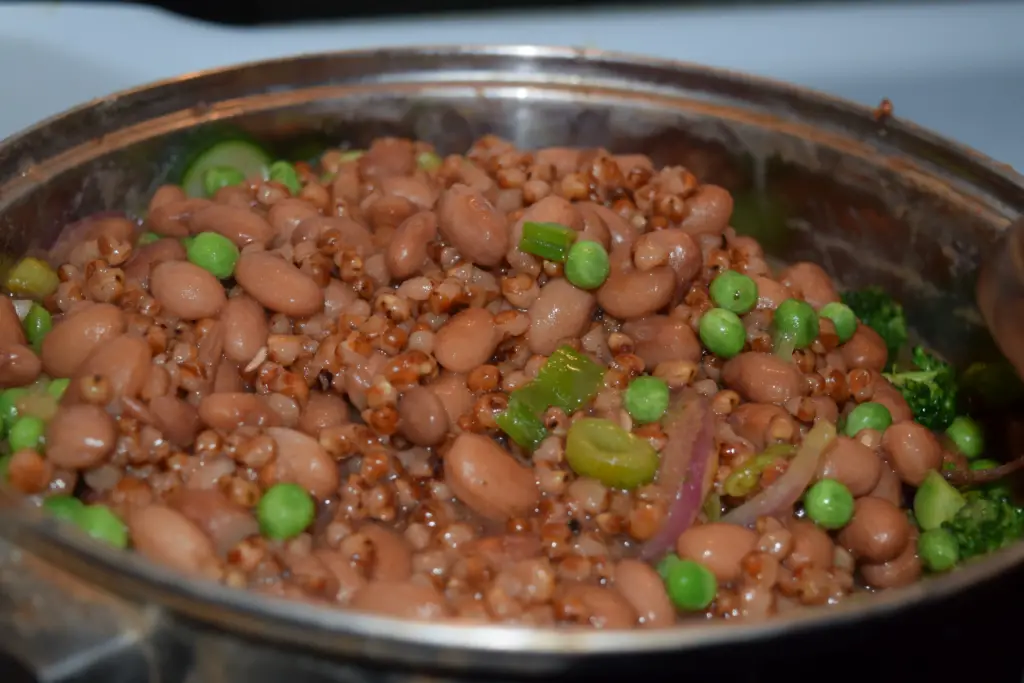
Popular Botswana dishes include.
- Seswaa: Slow-cooked shredded beef, savory delight.
- Morogo: Wild spinach sautéed with tomatoes.
- Bogobe: Porridge made from sorghum flour.
- Mopane Worms: Fried caterpillars, crunchy protein source.
- Dikgobe: Bean and maize stew, comforting.
- Phane: Mopane caterpillars, a delicacy fried.
- Magwinya: Deep-fried dough balls, street food.
- Serobe: Tripe stew with peanut butter.
- Chotlho: Cornmeal porridge with milk.
- Segwapa: Dried meat, Botswana-style jerky.
How Healthy is the Food in Botswana?

Assessing the overall healthfulness of Botswana’s cuisine is complex, as it depends on various factors like individual dietary choices, cooking methods, and access to quality ingredients. Here’s a balanced look at both the strengths and potential downsides:
Botswana Food Strengths
- Focus on fresh, local ingredients: Batswana cuisine utilizes readily available fruits, vegetables, and legumes, providing essential vitamins, minerals, and fiber.
- Traditional cooking methods: Steaming, boiling, and grilling are prevalent, preserving nutrients better than deep-frying.
- Use of healthy fats: Some dishes incorporate healthy fats like nuts and seeds, contributing to healthy fats intake.
- Staple grains: Sorghum and pearl millet, commonly used in porridges and breads, offer complex carbohydrates and fiber.
Botswana Food Potential Downsides
- High reliance on starchy staples: Dishes like bogobe (porridge) and pap can be high in carbohydrates, especially when consumed in large quantities.
- Palm oil usage: While a vital ingredient, palm oil is high in saturated fat, and overuse can pose health risks.
- Salting and seasoning variations: Some dishes may be heavy on salt or contain hidden sodium, which can be a concern for those with blood pressure issues.
- Limited access to diverse ingredients: In some regions, access to fresh fruits and vegetables can be limited, potentially impacting dietary diversity.
Overall
Botswana’s cuisine has the potential to be part of a healthy diet, emphasizing fresh ingredients, traditional cooking methods, and moderate portion sizes. However, being mindful of individual needs and making informed choices is crucial. Here are some tips:
- Limit palm oil: Opt for dishes cooked with other healthy fats like olive oil or sunflower oil.
- Balance starchy staples: Pair them with plenty of vegetables, fruits, and lean protein for a well-rounded meal.
- Be mindful of salt intake: Choose dishes prepared with minimal salt or opt for low-sodium versions.
- Prioritize variety: Include diverse fruits, vegetables, and protein sources in your diet.
- Consult a healthcare professional: They can provide personalized dietary advice based on your specific needs and health conditions.
Remember, “healthy” is relative and a personalized journey. Enjoy exploring Botswana’s unique cuisine while making informed choices for your well-being!
References
- Botswanan Food: 9 Must-Try Traditional Dishes of Botswana
- 10 Tasty Foods In Botswana You Would Love – African Food Network
- 20 Traditional Botswana Food And Tswana Cuisine To Try – Nomads Unveiled
- Botswana cuisine – Wikipedia
Botswana Cuisine Recipes You Can Try at Home
Are you ready to try your hand at Botswanan cooking? With a few key ingredients and some simple techniques, you can bring the authentic taste of Botswana into your own kitchen. Here are some recipes to get you started:
Botswana Food – Dikgobe (Bean and Maize Stew, Comforting)

Exploring Botswana’s Culinary Heritage: Dikgobe (Bean and Maize Stew, Comforting)
Botswana, a landlocked country in Southern Africa, boasts a rich culinary heritage influenced by its diverse ethnic groups. One beloved dish that captures the essence of Botswana’s comfort food is Dikgobe, a hearty bean and maize stew.
This traditional recipe reflects the country’s agricultural roots, with beans and maize being staple crops.
Botswana Food – Dikgobe Ingredients:
- 2 cups dried cowpeas (black-eyed peas), soaked overnight
- 1 cup dried maize (corn), soaked overnight
- 1 large onion, finely chopped
- 2 medium tomatoes, diced
- 3 cloves garlic, minced
- 2 teaspoons ground coriander
- 2 teaspoons ground cumin
- 1 teaspoon smoked paprika
- 1 teaspoon dried thyme
- Salt and pepper to taste
- 2 tablespoons vegetable oil
- 6 cups water
- Fresh parsley for garnish
Botswana Food – Dikgobe Recipe:
1. Preparation:
- Rinse the soaked cowpeas and maize under cold water.
- In a large pot, heat vegetable oil over medium heat.
2. Sauté Aromatics:
- Add chopped onions to the pot and sauté until translucent.
- Stir in minced garlic, and cook until fragrant.
3. Add Tomatoes and Spices:
- Mix in diced tomatoes and cook until they break down.
- Sprinkle ground coriander, cumin, smoked paprika, thyme, salt, and pepper. Stir well to coat the ingredients.
4. Incorporate Beans and Maize:
- Add the soaked cowpeas and maize to the pot, stirring to combine with the aromatic mixture.
5. Pour in Water:
- Pour 6 cups of water into the pot, ensuring the beans and maize are fully submerged.
6. Simmer:
- Bring the stew to a boil, then reduce the heat to low and let it simmer for 2 hours or until the beans and maize are tender.
7. Serve:
- Once cooked, ladle the Dikgobe into bowls, garnish with fresh parsley, and serve hot.
Serving Size:
- This recipe serves 6 people.
Estimated Cooking Time:
- 2 hours (plus overnight soaking).
Nutritional Information (Per Serving):
- Calories: 320
- Protein: 12g
- Fat: 6g
- Carbohydrates: 58g
- Fiber: 10g
Immerse yourself in the flavors of Botswana with this delightful Dikgobe recipe—a true embodiment of the country’s culinary tradition. Enjoy the warmth and comfort of this bean and maize stew, perfect for sharing with loved ones.
Botswana Food – Phane (Mopane Worms A Delicacy Fried)

Unveiling the Culinary Wonders of Southern Africa: Phane (Fried Mopane Worms Delicacy)
Embarking on a gastronomic journey through Southern Africa, we delve into the unique culinary landscape of Botswana, where indigenous flavors thrive. One extraordinary delicacy that stands out is Phane, a dish featuring Mopane worms—protein-packed larvae of the Emperor Moth.
With a history deeply rooted in traditional African cuisine, Phane has become a beloved delicacy, celebrated for its rich cultural significance and distinctive taste.
Botswana Food – Phane Ingredients:
- 1 cup dried Mopane worms
- 1 cup all-purpose flour
- 2 teaspoons ground chili powder
- 1 teaspoon ground cumin
- 1 teaspoon garlic powder
- Salt and pepper to taste
- Vegetable oil for frying
Botswana Food – Phane Recipe:
1. Rehydrate Mopane Worms:
- Place dried Mopane worms in a bowl of warm water and let them rehydrate for at least 1 hour.
2. Drain and Pat Dry:
- Drain the rehydrated Mopane worms and pat them dry with paper towels.
3. Prepare Flour Mixture:
- In a bowl, combine all-purpose flour, ground chili powder, ground cumin, garlic powder, salt, and pepper.
4. Coat Mopane Worms:
- Roll the dried Mopane worms in the flour mixture, ensuring they are well-coated.
5. Heat Vegetable Oil:
- In a deep pan, heat vegetable oil over medium-high heat.
6. Fry Mopane Worms:
- Carefully place the coated Mopane worms in the hot oil and fry until golden brown and crispy. This usually takes 2-3 minutes.
7. Drain and Serve:
- Remove the fried Mopane worms from the oil, allowing excess oil to drain on paper towels.
- Serve hot and crispy, ready to be enjoyed as a unique and flavorful delicacy.
Serving Size:
- This recipe serves 4 people.
Estimated Cooking Time:
- 1 hour (including rehydration).
Nutritional Information (Per Serving):
- Calories: 150
- Protein: 15g
- Fat: 5g
- Carbohydrates: 10g
- Fiber: 2g
Bringing the exotic taste of Phane to your home, this fried Mopane worms delicacy showcases the diverse and intriguing flavors of Botswana. Elevate your culinary experience by exploring the rich tapestry of African cuisine with this unique and adventurous dish.
Botswana Food – Magwinya (Deep-Fried Dough Balls, Street Food)

Rediscovering Botswana’s Street Food Delight: Magwinya (Deep-Fried Dough Balls)
In the bustling streets of Botswana, the air is infused with the tantalizing aroma of Magwinya, a beloved street food that has become a culinary symbol of the region. Originating from the vibrant street markets, these deep-fried dough balls have a rich history, reflecting the dynamic and diverse food culture of Botswana.
The crispy exterior and soft interior make Magwinya an irresistible treat enjoyed by locals and visitors alike.
Botswana Food – Magwinya (Deep-Fried Dough Balls, Street Food) Ingredients:
- 2 cups all-purpose flour
- 1 tablespoon sugar
- 1 teaspoon baking powder
- 1/2 teaspoon salt
- 1 cup warm water
- Vegetable oil for frying
Botswana Food – Magwinya (Deep-Fried Dough Balls, Street Food) Recipe:
1. Prepare Dough:
- In a mixing bowl, combine all-purpose flour, sugar, baking powder, and salt.
- Gradually add warm water, mixing until a soft, elastic dough forms.
2. Allow Dough to Rise:
- Cover the bowl with a damp cloth and let the dough rise for 1 hour, or until it doubles in size.
3. Heat Vegetable Oil:
- In a deep pan, heat vegetable oil to 350°F (175°C).
4. Shape and Fry Magwinya:
- Pinch off small portions of the risen dough and shape them into balls.
- Carefully drop the dough balls into the hot oil and fry until they turn golden brown, about 3 minutes per side.
5. Drain and Serve:
- Remove the fried Magwinya from the oil, allowing excess oil to drain on paper towels.
- Serve warm and enjoy these delightful deep-fried dough balls on their own or with a dipping sauce of your choice.
Serving Size:
- This recipe makes approximately 15 Magwinya.
Estimated Cooking Time:
- 2 hours (including dough rising).
Nutritional Information (Per Serving, 1 Magwinya):
- Calories: 120
- Protein: 2g
- Fat: 6g
- Carbohydrates: 15g
- Fiber: 1g
Experience the vibrant street food culture of Botswana in the comfort of your home with these delightful Magwinya. Perfectly crispy on the outside and soft on the inside, these deep-fried dough balls are a true celebration of Botswana’s culinary heritage.
Botswana Food – Serobe (Tripe Stew with Peanut Butter)

Unveiling the Culinary Heritage of Botswana: Serobe (Tripe Stew with Peanut Butter)
In the heart of Botswana’s gastronomic tapestry, we discover Serobe, a traditional tripe stew enriched with the delightful creaminess of peanut butter. Rooted in the cultural heritage of the region, Serobe reflects the culinary ingenuity of Botswana, where tripe, a staple ingredient, takes center stage.
This flavorful dish is a celebration of local flavors and a testament to the creativity found in the country’s kitchens.
Botswana Food – Serobe Ingredients:
- 2 pounds beef tripe, cleaned and cut into bite-sized pieces
- 1 large onion, finely chopped
- 2 tomatoes, diced
- 3 tablespoons peanut butter
- 2 teaspoons ground coriander
- 2 teaspoons ground cumin
- 1 teaspoon paprika
- 3 cloves garlic, minced
- Salt and pepper to taste
- 2 tablespoons vegetable oil
- Fresh cilantro for garnish
- Cooked rice for serving
Botswana Food – Serobe Recipe:
1. Prepare Tripe:
- Clean the beef tripe thoroughly and cut it into bite-sized pieces.
2. Sauté Aromatics:
- In a large pot, heat vegetable oil over medium heat.
- Add chopped onions and sauté until translucent.
- Stir in minced garlic and cook until fragrant.
3. Add Tomatoes and Spices:
- Mix in diced tomatoes and cook until they soften.
- Add ground coriander, ground cumin, paprika, salt, and pepper. Stir well to coat the ingredients.
4. Incorporate Tripe:
- Add the prepared tripe to the pot, stirring to combine with the aromatic mixture.
5. Cook Tripe:
- Cover the pot and let the tripe simmer for 1.5 to 2 hours or until tender, stirring occasionally.
6. Introduce Peanut Butter:
- Gently stir in peanut butter, ensuring it is well incorporated into the stew.
7. Serve:
- Once cooked, ladle the Serobe over cooked rice, garnish with fresh cilantro, and serve hot.
Serving Size:
- This recipe serves 6 people.
Estimated Cooking Time:
- 2 hours (including tripe simmering).
Nutritional Information (Per Serving):
- Calories: 320
- Protein: 18g
- Fat: 22g
- Carbohydrates: 12g
- Fiber: 3g
Immerse yourself in the rich flavors of Botswana with this Serobe recipe. The combination of tender tripe and creamy peanut butter creates a culinary masterpiece that will transport you to the heart of this captivating African nation.
Botswana Food – Chotlho (Cornmeal Porridge with Milk)

Uncovering Botswana’s Breakfast Tradition: Chotlho (Cornmeal Porridge with Milk)
Delving into the breakfast traditions of Botswana, we encounter Chotlho, a hearty cornmeal porridge embraced for its simplicity and nourishing qualities. Originating from the Southern African region, Chotlho has been a staple in Botswana’s culinary repertoire for generations.
This warm and comforting dish, often enjoyed with a drizzle of milk, reflects the cultural heritage and love for wholesome breakfasts in the country.
Botswana Food – Chotlho Ingredients:
- 1 cup cornmeal
- 4 cups water
- 1 cup milk
- 2 tablespoons sugar (optional)
- Pinch of salt
- Butter for serving (optional)
- Ground cinnamon for garnish (optional)
Botswana Food – Chotlho Recipe:
1. Boil Water:
- In a pot, bring 4 cups of water to a boil.
2. Add Cornmeal:
- Gradually sprinkle cornmeal into the boiling water, stirring continuously to avoid lumps.
3. Cook Cornmeal:
- Reduce the heat to low and let the cornmeal simmer, stirring frequently, until it thickens to the desired consistency. This usually takes about 15-20 minutes.
4. Incorporate Milk and Sugar:
- Pour in the milk and add sugar if desired. Stir well to combine.
5. Season with Salt:
- Add a pinch of salt to enhance the flavors, adjusting to taste.
6. Serve:
- Ladle the Chotlho into bowls, top with a pat of butter if desired, and sprinkle with ground cinnamon for added flavor.
Serving Size:
- This recipe serves 4 people.
Estimated Cooking Time:
- 25 minutes.
Nutritional Information (Per Serving):
- Calories: 180
- Protein: 6g
- Fat: 2g
- Carbohydrates: 35g
- Fiber: 4g
Start your day with the warmth and nourishment of Chotlho, a classic Botswanan breakfast. This simple and wholesome cornmeal porridge is a testament to the country’s culinary traditions, offering a taste of comfort and tradition in every spoonful.
Botswana Food – Segwapa (Dried Meat, Botswana-Style Jerky)

Exploring Botswana’s Culinary Heritage: Segwapa (Dried Meat, Botswana-Style Jerky)
In the heart of Botswana’s expansive landscapes and rich cultural tapestry, we uncover Segwapa—a flavorful and traditional dried meat that echoes the region’s culinary roots. Known as Botswana-style jerky, Segwapa is a testament to the country’s resourcefulness, allowing locals to preserve meat in a harsh environment.
This age-old technique of air-drying meat has evolved into a beloved snack, cherished for its bold flavors and historical significance in the Southern African culinary narrative.
Botswana Food – Segwapa Ingredients:
- 1 pound beef, thinly sliced
- 1/4 cup soy sauce
- 2 tablespoons Worcestershire sauce
- 2 tablespoons brown sugar
- 1 tablespoon smoked paprika
- 1 teaspoon garlic powder
- 1 teaspoon onion powder
- 1 teaspoon black pepper
- 1/2 teaspoon cayenne pepper (optional for heat)
Botswana Food – Segwapa Recipe:
1. Slice the Meat:
- Thinly slice the beef, aiming for uniform pieces to ensure even drying.
2. Prepare Marinade:
- In a bowl, combine soy sauce, Worcestershire sauce, brown sugar, smoked paprika, garlic powder, onion powder, black pepper, and cayenne pepper if you prefer some heat.
3. Marinate the Meat:
- Place the sliced beef in a resealable plastic bag or shallow dish.
- Pour the marinade over the meat, ensuring each piece is well-coated.
- Seal the bag or cover the dish and refrigerate for at least 4 hours, or overnight for deeper flavor.
4. Preheat the Oven:
- Preheat your oven to 175°F (80°C) or the lowest setting available.
5. Arrange on Baking Sheets:
- Line baking sheets with parchment paper.
- Arrange the marinated meat slices on the baking sheets, leaving space between each piece for air circulation.
6. Dry in the Oven:
- Place the baking sheets in the preheated oven and leave the door slightly ajar to allow moisture to escape.
- Allow the meat to dry for 4-6 hours, or until it reaches your desired level of chewiness.
7. Cool and Enjoy:
- Once dried, remove the Segwapa from the oven and let it cool completely.
- Store in an airtight container and savor the Botswana-style jerky as a delightful snack.
Serving Size:
- This recipe yields approximately 8 servings.
Estimated Cooking Time:
- 4-6 hours (plus marinating time).
Nutritional Information (Per Serving):
- Calories: 120
- Protein: 15g
- Fat: 5g
- Carbohydrates: 4g
- Fiber: 0g
Embark on a culinary adventure with Segwapa, savoring the flavors of Botswana’s time-honored jerky. Whether enjoyed as a snack or paired with local traditions, this dried meat pays homage to the resilience and creativity ingrained in Botswana’s gastronomic legacy.
Botswana Food – Traditional Style Chicken

Rediscovering Botswana’s Culinary Roots: Traditional Style Chicken
In the heart of Botswana, where the vast landscapes meet cultural diversity, Traditional Style Chicken takes center stage. Rooted in the country’s culinary history, this dish reflects the essence of communal cooking and the vibrant flavors of Southern Africa.
Combining local spices and techniques, Traditional Style Chicken captures the spirit of Botswana’s traditional cooking methods, offering a taste of the rich heritage that defines the region.
Botswana Food – Traditional Style Chicken Ingredients:
- 1 whole chicken
- 2 large onions, finely chopped
- 3 tomatoes, diced
- 4 cloves garlic, minced
- 1 teaspoon ground ginger
- 1 teaspoon ground coriander
- 1 teaspoon smoked paprika
- 1 teaspoon dried thyme
- Salt and pepper to taste
- 3 tablespoons vegetable oil
- 1 cup chicken broth
- Fresh cilantro for garnish
Botswana Food – Traditional Style Chicken Recipe:
1. Marinate the Chicken:
- In a large bowl, combine chicken with minced garlic, ground ginger, ground coriander, smoked paprika, dried thyme, salt, and pepper.
- Let the chicken marinate for at least 30 minutes, allowing the flavors to meld.
2. Sauté Onions and Tomatoes:
- In a large skillet, heat vegetable oil over medium heat.
- Add chopped onions and cook until translucent.
- Stir in diced tomatoes, cooking until they soften and release their juices.
3. Brown the Chicken:
- Add the marinated chicken pieces to the skillet, allowing them to brown on all sides.
4. Season and Simmer:
- Sprinkle additional salt and pepper over the chicken.
- Pour in chicken broth, cover the skillet, and let the chicken simmer for 30-40 minutes or until fully cooked, turning occasionally.
5. Garnish and Serve:
- Once cooked, transfer the Traditional Style Chicken to a serving platter.
- Garnish with fresh cilantro and serve hot, either on its own or with a side of rice.
Serving Size:
- This recipe serves 4 people.
Estimated Cooking Time:
- 1 hour (including marinating time).
Nutritional Information (Per Serving):
- Calories: 350
- Protein: 30g
- Fat: 22g
- Carbohydrates: 10g
- Fiber: 2g
Transport your taste buds to the heart of Botswana with Traditional Style Chicken—an embodiment of the region’s culinary heritage and a celebration of communal dining. Share the flavors of Southern Africa with friends and family through this delightful and comforting dish.
Botswana Food – Motogo (Fermented Millet Porridge)

A Taste of Tradition: Motogo (Fermented Millet Porridge) from Botswana
Nestled in the heart of Southern Africa, Botswana introduces us to Motogo, a cherished traditional dish that has stood the test of time. Originating from the region’s indigenous communities, Motogo is a fermented millet porridge that embodies the spirit of communal cooking.
This dish, with its roots deeply embedded in Botswana’s cultural fabric, showcases the resourcefulness and resilience of the people, celebrating the simple yet nourishing flavors of fermented millet.
Botswana Food – Motogo Ingredients:
- 2 cups millet
- 6 cups water
- 1 cup maas (fermented milk) or yogurt
- 2 tablespoons sugar
- 1/2 teaspoon salt
- Fresh fruits for garnish (optional)
Botswana Food – Motogo Recipe:
1. Rinse Millet:
- Rinse the millet thoroughly under cold water to remove any impurities.
2. Ferment Millet:
- In a bowl, combine millet and 4 cups of water. Cover the bowl and let it sit at room temperature for 24-48 hours to ferment. Stir occasionally.
3. Cook Millet:
- In a large pot, bring 2 cups of water to a boil.
- Add the fermented millet and simmer over low heat until the mixture thickens, stirring regularly. This usually takes about 20-30 minutes.
4. Sweeten and Season:
- Stir in sugar and salt, adjusting to taste.
- Continue cooking until the Motogo reaches a porridge-like consistency.
5. Incorporate Maas or Yogurt:
- Remove the pot from heat and let the Motogo cool slightly.
- Gently fold in maas (fermented milk) or yogurt to add a delightful tang.
6. Garnish and Serve:
- Ladle the Motogo into bowls, garnish with fresh fruits if desired, and serve warm.
Serving Size:
- This recipe serves 4 people.
Estimated Cooking Time:
- 48-72 hours (including fermentation and cooking).
Nutritional Information (Per Serving):
- Calories: 180
- Protein: 6g
- Fat: 3g
- Carbohydrates: 35g
- Fiber: 5g
Experience the authentic flavors of Botswana with Motogo, a fermented millet porridge that honors the country’s culinary heritage. Celebrate the connection between food and culture as you savor the wholesome goodness of this traditional dish, perfect for sharing with loved ones.
Botswana Food – Menoto (Chicken Feet)

A Culinary Adventure in Botswana: Menoto (Chicken Feet)
Embarking on a culinary journey through Botswana, we encounter Menoto, a unique dish that embraces the resourcefulness of Southern African cooking. Originating from local traditions, Menoto, featuring chicken feet, is a testament to the culinary creativity of the region.
Widely enjoyed for its rich flavor and gelatinous texture, this dish has become a symbol of Botswana’s gastronomic diversity.
Botswana Food – Menoto Ingredients:
- 2 pounds chicken feet, cleaned and nails removed
- 2 large onions, finely chopped
- 3 tomatoes, diced
- 4 cloves garlic, minced
- 2 teaspoons ground coriander
- 2 teaspoons ground cumin
- 1 teaspoon paprika
- 1 teaspoon dried thyme
- Salt and pepper to taste
- 3 tablespoons vegetable oil
- Fresh parsley for garnish
- Cooked rice or bread for serving
Botswana Food – Menoto Recipe:
1. Prepare Chicken Feet:
- Clean the chicken feet thoroughly, removing any remaining nails.
2. Sauté Aromatics:
- In a large pot, heat vegetable oil over medium heat.
- Add chopped onions and sauté until translucent.
- Stir in minced garlic, cooking until fragrant.
3. Add Tomatoes and Spices:
- Mix in diced tomatoes and cook until they break down.
- Sprinkle ground coriander, ground cumin, paprika, dried thyme, salt, and pepper. Stir well to coat the ingredients.
4. Incorporate Chicken Feet:
- Add the prepared chicken feet to the pot, ensuring they are well-coated with the aromatic mixture.
5. Simmer:
- Cover the pot and let the Menoto simmer for 1.5 to 2 hours, or until the chicken feet are tender and flavorful.
6. Serve:
- Once cooked, ladle the Menoto into bowls, garnish with fresh parsley, and serve hot with rice or bread.
Serving Size:
- This recipe serves 4 people.
Estimated Cooking Time:
- 2 hours.
Nutritional Information (Per Serving):
- Calories: 280
- Protein: 20g
- Fat: 15g
- Carbohydrates: 10g
- Fiber: 2g
Explore the unexpected and savor the distinctive flavors of Botswana with Menoto—embracing the culinary diversity that defines this region. Elevate your dining experience with this unique dish, perfect for those who appreciate the artistry of traditional Southern African cooking.
Botswana Food – Mogatla (Oxtail Stew)

Unveiling Botswana’s Culinary Gem: Mogatla (Oxtail Stew)
In the heart of Southern Africa, Botswana introduces us to Mogatla, a soul-satisfying oxtail stew that has become a cornerstone of the region’s culinary tradition. This dish reflects the country’s connection to agriculture and livestock, with oxtail being a beloved and flavorful cut of meat.
Mogatla, simmered to perfection with a medley of spices and vegetables, encapsulates the warmth and heartiness of Botswana’s gastronomic heritage.
Botswana Food – Mogatla Ingredients:
- 2 pounds oxtail, cut into pieces
- 2 large onions, finely chopped
- 3 carrots, peeled and sliced
- 3 potatoes, peeled and diced
- 4 cloves garlic, minced
- 2 tomatoes, diced
- 2 teaspoons ground coriander
- 2 teaspoons ground cumin
- 1 teaspoon smoked paprika
- 1 teaspoon dried thyme
- Salt and pepper to taste
- 3 tablespoons vegetable oil
- 6 cups beef broth
- Fresh parsley for garnish
Botswana Food – Mogatla Recipe:
1. Brown Oxtail:
- In a large pot, heat vegetable oil over medium heat.
- Add oxtail pieces and brown them on all sides.
2. Sauté Aromatics:
- Stir in chopped onions and minced garlic, sautéing until onions are translucent.
3. Add Spices and Tomatoes:
- Sprinkle ground coriander, ground cumin, smoked paprika, and dried thyme over the oxtail.
- Mix in diced tomatoes, allowing them to break down and release their juices.
4. Simmer with Broth:
- Pour in beef broth, ensuring the oxtail is fully submerged.
- Cover the pot and let the stew simmer over low heat for 2.5 to 3 hours until the oxtail becomes tender.
5. Add Vegetables:
- Add sliced carrots and diced potatoes to the stew.
- Continue simmering for an additional 30-40 minutes or until the vegetables are cooked through.
6. Season and Serve:
- Season the stew with salt and pepper to taste.
- Ladle Mogatla into bowls, garnish with fresh parsley, and serve hot.
Serving Size:
- This recipe serves 4 people.
Estimated Cooking Time:
- 3.5 to 4 hours.
Nutritional Information (Per Serving):
- Calories: 400
- Protein: 30g
- Fat: 25g
- Carbohydrates: 15g
- Fiber: 3g
Mogatla, a delightful oxtail stew, invites you to savor the flavors of Botswana’s culinary heritage. With its tender oxtail pieces and aromatic spices, this dish is a true embodiment of comfort and tradition, making it a perfect addition to your Southern African culinary experience.
Botswana Food – Pumpkin Soup

Harvesting Flavors from Botswana: Pumpkin Soup Delight
Nestled in the heart of Southern Africa, Botswana surprises us with a culinary gem—Pumpkin Soup. As a country with a strong agricultural foundation, Botswana celebrates its local produce, and this comforting soup is a testament to that.
Rich in history and tradition, Pumpkin Soup reflects the country’s connection to the land and its vibrant flavors. Join me on a journey to discover the heartwarming essence of Botswana through this delightful soup.
Botswana Food – Pumpkin Soup Ingredients:
- 1 medium-sized pumpkin, peeled and diced
- 1 large onion, chopped
- 2 carrots, peeled and sliced
- 2 potatoes, peeled and diced
- 3 cloves garlic, minced
- 4 cups vegetable broth
- 1 teaspoon ground ginger
- 1 teaspoon ground cumin
- 1/2 teaspoon ground nutmeg
- Salt and pepper to taste
- 2 tablespoons olive oil
- Fresh parsley for garnish
Botswana Food – Pumpkin Soup Recipe:
1. Sauté Aromatics:
- In a large pot, heat olive oil over medium heat.
- Add chopped onions and minced garlic, sautéing until onions are soft and translucent.
2. Add Vegetables:
- Stir in diced pumpkin, sliced carrots, and diced potatoes, allowing them to cook for a few minutes.
3. Season:
- Sprinkle ground ginger, ground cumin, ground nutmeg, salt, and pepper over the vegetables. Stir well to coat.
4. Pour in Broth:
- Pour vegetable broth into the pot, ensuring it covers the vegetables.
- Bring the mixture to a boil, then reduce the heat to low and let it simmer for 20-25 minutes or until the vegetables are tender.
5. Blend:
- Using an immersion blender or transferring to a regular blender in batches, blend the soup until smooth and creamy.
6. Adjust Seasoning and Serve:
- Taste the soup and adjust the seasoning if needed.
- Ladle the Pumpkin Soup into bowls, garnish with fresh parsley, and serve hot.
Serving Size:
- This recipe serves 4 people.
Estimated Cooking Time:
- 40 minutes.
Nutritional Information (Per Serving):
- Calories: 180
- Protein: 3g
- Fat: 7g
- Carbohydrates: 30g
- Fiber: 5g
Experience the warmth of Botswana’s culinary heritage with this Pumpkin Soup. A celebration of local ingredients and traditional flavors, this soup is a delicious way to connect with the heart of Southern African cuisine.
Botswana Food – Tswana Chicken (Groundnut Stew)

A Culinary Expedition to Botswana: Tswana Chicken (Groundnut Stew)
In the heart of Southern Africa, we uncover the rich culinary traditions of Botswana with Tswana Chicken, a savory Groundnut Stew. This dish not only showcases the country’s agricultural prowess but also pays homage to the Tswana people.
They are one of Botswana’s major ethnic groups. Groundnuts, or peanuts, take center stage, imparting a unique flavor and texture to this beloved chicken stew. Join me on a journey to explore the history and savor the taste of Tswana Chicken.
Botswana Food – Tswana Chicken Ingredients:
- 2 pounds chicken pieces
- 1 cup groundnuts (peanuts), roasted and ground into a paste
- 2 large onions, finely chopped
- 3 tomatoes, diced
- 4 cloves garlic, minced
- 1 teaspoon ground ginger
- 1 teaspoon ground coriander
- 1 teaspoon paprika
- 1/2 teaspoon cayenne pepper (adjust to taste)
- Salt and pepper to taste
- 3 tablespoons vegetable oil
- Fresh cilantro for garnish
- Cooked rice for serving
Botswana Food – Tswana Chicken Recipe:
1. Roast and Grind Groundnuts:
- Roast the groundnuts in a dry pan until golden brown.
- Allow them to cool, then grind them into a smooth paste.
2. Sauté Aromatics:
- In a large pot, heat vegetable oil over medium heat.
- Add chopped onions and sauté until translucent.
- Stir in minced garlic and cook until fragrant.
3. Brown Chicken:
- Add chicken pieces to the pot, browning them on all sides.
4. Add Spices and Tomatoes:
- Sprinkle ground ginger, ground coriander, paprika, cayenne pepper, salt, and pepper over the chicken.
- Mix in diced tomatoes, allowing them to break down.
5. Incorporate Groundnut Paste:
- Spoon the groundnut paste into the pot, stirring to coat the chicken in the rich, nutty flavor.
6. Simmer:
- Cover the pot and let the Tswana Chicken simmer over low heat for 30-40 minutes, or until the chicken is cooked through and tender.
7. Garnish and Serve:
- Once cooked, garnish the stew with fresh cilantro and serve hot over cooked rice.
Serving Size:
- This recipe serves 4 people.
Estimated Cooking Time:
- 1 hour.
Nutritional Information (Per Serving):
- Calories: 400
- Protein: 30g
- Fat: 25g
- Carbohydrates: 15g
- Fiber: 3g
Experience the flavors of Botswana with Tswana Chicken—a delightful Groundnut Stew that reflects the country’s cultural and culinary diversity. Savor the nutty goodness and aromatic spices that make this dish a true embodiment of Southern African cuisine.
Botswana Food – Leleme (Toasted Beef Tongue)

Uncovering Culinary Traditions: Leleme (Toasted Beef Tongue) from Botswana
Delving into Botswana’s culinary tapestry, we encounter Leleme—a unique dish that showcases the country’s ingenuity in utilizing every part of the animal. Originating from the rich food culture of Botswana, Leleme features beef tongue, toasted to perfection.
This traditional dish not only reflects the resourcefulness of the locals but also highlights their commitment to sustainable and flavorful cooking. Join me as we explore the history and savor the taste of Botswana’s Leleme.
Botswana Food – Leleme Ingredients:
- 2 beef tongues, cleaned and peeled
- 2 tablespoons olive oil
- 2 teaspoons ground coriander
- 1 teaspoon garlic powder
- 1 teaspoon onion powder
- 1 teaspoon smoked paprika
- Salt and pepper to taste
- Fresh herbs for garnish (optional)
Botswana Food – Leleme Recipe:
1. Prepare Beef Tongues:
- Clean the beef tongues thoroughly, ensuring they are free from any residue.
- Peel the tough outer layer to reveal the tender meat underneath.
2. Season the Tongues:
- In a small bowl, combine ground coriander, garlic powder, onion powder, smoked paprika, salt, and pepper.
- Rub the seasoning mixture over the peeled beef tongues, ensuring an even coating.
3. Toast the Tongues:
- Heat olive oil in a pan over medium-high heat.
- Place the seasoned beef tongues in the pan and toast each side for 5-7 minutes or until golden brown and cooked through.
4. Let It Rest:
- Once toasted, remove the beef tongues from the pan and let them rest for a few minutes before slicing.
5. Slice and Garnish:
- Slice the toasted beef tongues into thin pieces.
- Garnish with fresh herbs if desired.
6. Serve:
- Arrange the Leleme on a platter and serve warm as a unique and flavorful dish.
Serving Size:
- This recipe serves 4 people.
Estimated Cooking Time:
- 30 minutes.
Nutritional Information (Per Serving):
- Calories: 250
- Protein: 20g
- Fat: 15g
- Carbohydrates: 5g
- Fiber: 1g
Embark on a culinary adventure with Leleme, savoring the unique flavors and cultural heritage of Botswana. Toasted to perfection, this dish showcases the beauty of using every part of the animal and offers a delicious glimpse into the country’s traditional cooking practices.
Botswana Food – Braai Meat (Meat Over Open Fire)

A Culinary Ritual in Botswana: Braai Meat (Meat Over Open Fire)
In the heart of Southern Africa, Botswana beckons us with the enticing aroma of Braai Meat—a culinary ritual deeply embedded in the region’s traditions. Originating from the concept of braaing, or grilling over an open flame, this method of cooking has become synonymous with communal gatherings and celebrations.
The social and cultural significance of Braai Meat extends beyond its delicious flavors, making it a true symbol of Botswana’s vibrant culinary heritage.
Botswana Food – Braai Meat Ingredients:
- 2 pounds beef steak, chicken pieces, or lamb chops
- Salt and pepper to taste
- Marinade options:
- For beef: olive oil, garlic, rosemary
- For chicken: lemon juice, thyme, paprika
- For lamb: yogurt, mint, cumin
Botswana Food – Braai Meat Recipe:
1. Prepare the Meat:
- Choose your preferred meat and ensure it’s clean and properly trimmed.
- Season with salt and pepper on both sides.
2. Create Marinade (if using):
- In a bowl, mix the marinade ingredients based on your meat choice. For example, olive oil, garlic, and rosemary for beef.
3. Marinate the Meat:
- Coat the meat generously with the prepared marinade, ensuring an even distribution.
- Let it marinate for at least 30 minutes, or overnight for enhanced flavor.
4. Heat the Grill:
- Preheat the grill or open fire to medium-high heat.
5. Grill the Meat:
- Place the marinated meat on the grill, allowing it to cook to your desired level of doneness.
- Turn the meat occasionally for even cooking.
6. Rest and Serve:
- Once cooked, remove the Braai Meat from the grill and let it rest for a few minutes.
- Serve hot, paired with your favorite side dishes or enjoyed on its own.
Serving Size:
- This recipe serves 4 people.
Estimated Cooking Time:
- 20-30 minutes.
Nutritional Information (Per Serving):
- Calories: Varies based on meat type
- Protein: Varies based on meat type
- Fat: Varies based on meat type
- Carbohydrates: Varies based on meat type
- Fiber: Varies based on meat type
Braai Meat is more than a meal; it’s a cultural experience that captures the essence of Botswana’s social gatherings. Elevate your taste buds with the smoky flavors of grilled meat, echoing the rich traditions and warm hospitality of this Southern African gem.
Botswana Food – Chicken in A Hole

Culinary Charm from Botswana: Chicken in A Hole
In the heart of Southern Africa, Botswana offers a culinary gem known as Chicken in A Hole. Rooted in the region’s rich traditions, this dish showcases the resourcefulness of Botswana’s cooking methods. The concept is simple yet ingenious—marinated chicken cooked in a hole dug in the ground, using hot coals to create a unique, smoky flavor.
Join me as we explore the history and flavors of Chicken in A Hole, a dish that brings communities together over a shared love for delicious, outdoor-cooked food.
Botswana Food – Chicken in A Hole Ingredients:
- 1 whole chicken, cleaned and patted dry
- 2 lemons, sliced
- 4 cloves garlic, minced
- 2 tablespoons olive oil
- 1 teaspoon dried thyme
- 1 teaspoon paprika
- Salt and pepper to taste
- Vegetables for stuffing (carrots, onions, potatoes)
- Aluminum foil
Botswana Food – Chicken in A Hole Recipe:
1. Prepare the Marinade:
- In a bowl, mix minced garlic, olive oil, dried thyme, paprika, salt, and pepper.
- Rub the marinade over the whole chicken, ensuring it’s evenly coated inside and out.
2. Stuff the Chicken:
- Place lemon slices and chopped vegetables inside the chicken cavity for added flavor.
- Truss the chicken legs with kitchen twine to secure the stuffing.
3. Dig the Hole:
- Dig a hole in the ground, approximately 2 feet deep and wide enough to accommodate the chicken comfortably.
4. Start the Fire:
- Build a fire in the hole using charcoal or wood until you have a bed of hot coals.
5. Wrap and Bury the Chicken:
- Wrap the marinated chicken in aluminum foil, leaving the top open.
- Place the wrapped chicken in the hole, cover it with the remaining hot coals, and bury it with soil.
6. Cook:
- Let the chicken cook in the buried hole for 2-3 hours, depending on its size. The earthy, smoky aroma will indicate when it’s done.
7. Unearth and Serve:
- Carefully unearth the chicken, unwrap it, and marvel at the succulent, flavorful masterpiece you’ve created.
- Serve hot with the roasted vegetables.
Serving Size:
- This recipe serves 4 people.
Estimated Cooking Time:
- 2-3 hours.
Nutritional Information (Per Serving):
- Calories: 300
- Protein: 25g
- Fat: 18g
- Carbohydrates: 10g
- Fiber: 2g
Experience the magic of Chicken in A Hole—a culinary journey that captures the essence of Botswana’s outdoor cooking traditions. Gather around the fire, savor the smoky aromas, and enjoy the delightful flavors that emerge from this unique and communal culinary experience.
Botswana recipes – Seswaa

Botswana recipes – History and Background of Seswaa
- Seswaa (also spelled “seswai”) is a traditional meat dish from Botswana.
- Chefs often prepare it for special occasions, ceremonies, and family gatherings.
- The dish has its roots in the simple culinary traditions of the Batswana people where meat and maize porridge (pap) form the staple diet.
- They make it primarily from beef or goat meat that they boil and pound.
Ingredients for Seswaa
- 2-3 lbs. of beef or goat meat, preferably with bones (the bones add flavor to the broth).
- Salt to taste.
- Water.
- Optional: onions or peppers for additional flavor.
Botswana recipes – Seswaa
Preparation of Meat
- Begin by cutting the meat into sizable chunks. If you’re using meat with bones, keep the bones in as they’ll add flavor.
- Rinse the meat thoroughly in cold water.
Cooking
- Place the meat in a large pot and add enough water to cover the meat.
- Add salt to taste.
- If desired, you can also add roughly chopped onions or peppers at this stage.
- Bring the water to a boil and then reduce the heat to a simmer.
- Let the meat simmer until it’s soft and tender. This can take anywhere from 2 to 4 hours depending on the type and cut of meat.
Pounding
- Once the meat is tender, remove it from the pot and reserve the broth.
- Using a wooden spoon, pestle, or the end of a rolling pin, pound the meat until it’s shredded. The traditional method involves pounding the meat in a mortar, but you can use any method that works best for you.
Final Steps
- Once the meat is fully shredded, return it to the pot with the broth.
- Heat the meat and broth together, stirring continuously, until the mixture has thickened slightly and the meat is well-mixed with the broth.
- Adjust salt if necessary.
Serving
- Seswaa is traditionally served with maize porridge (pap) or soft sorghum porridge.
- You can also serve it with rice or bread.
The dish is known for its simple flavor profile, focusing on the natural taste of the meat. You can make adjustments and add additional ingredients to suit your own taste.
Traditional seswaa is kept straightforward.
Botswana recipes – Morogo

Morogo is a wild spinach found in the southern African region. It is a staple food in Botswana and is high in vitamins and minerals. Morogo is usually boiled and served with sesame seeds or peanut butter to add flavor.
Botswana recipes – History and Background of Morogo
- Morogo, also known as “wild spinach”, refers to a variety of green leafy vegetables that grow naturally across southern Africa.
- Morogo has been a staple in the diets of indigenous communities in Botswana (as well as in other countries in the region) for generations.
- In Botswana, traditional morogo usually comprises the leaves of plants such as Amaranthus, Cleome, and Vigna, among others.
- The leaves are collected, cooked, and eaten as a side dish, similar to the way spinach or collard greens might be consumed in other cuisines.
- Due to its nutritional value and cultural significance, it’s often considered a traditional delicacy.
Botswana recipes – Ingredients for Morogo
- 4-5 cups of morogo (wild spinach) leaves, washed and roughly chopped. If you cannot find traditional morogo leaves, substitute with a mix of kale, collard greens, and spinach.
- 2 tablespoons of cooking oil or butter.
- 1 large onion, finely chopped.
- 2-3 garlic cloves, minced.
- 2 tomatoes, chopped.
- 1-2 green or red chili peppers (optional, based on heat preference).
- Salt and pepper to taste.
- 1 cup of water or broth.
- Optional: red pepper flakes or paprika for added flavor.
Morogo Recipe
Preparation
- Begin by washing the morogo leaves thoroughly to remove any dirt or insects.
- Roughly chop the leaves and set them aside.
Sautéing
- In a large pot or skillet, heat the cooking oil or butter over medium heat.
- Add the chopped onions and sauté until they become translucent.
- Incorporate the minced garlic and continue sautéing for another 1-2 minutes.
Cooking the Morogo
- Add the chopped tomatoes to the pot and stir well.
- If you’re using chili peppers, chop them finely and add them now.
- Pour in the water or broth and bring the mixture to a gentle boil.
- Add the chopped morogo leaves to the pot.
- Season with salt, pepper, and any additional spices if using.
- Reduce the heat to low and let the mixture simmer for about 20-30 minutes. Stir occasionally to prevent sticking and ensure even cooking.
Finalizing
- Once the morogo leaves are soft and well-cooked, and the liquid has reduced to your desired consistency, adjust the seasoning if needed.
- Remove from heat.
Serving
- Morogo can be served as a side dish alongside staple foods like maize porridge (pap), rice, or meat dishes.
- Some people also enjoy it with a squeeze of fresh lemon juice on top.
While the recipe is traditional, there are many variations of morogo across households in Botswana. Adjustments and additions can be made based on personal preference.
Botswana recipes – Polenta (Phaleche)

Polenta, called phaleche in Botswana, is maize meal boiled in water until it forms a thick porridge. It is usually served with relish, which can be meat or vegetables cooked with tomatoes and onions.
Botswana recipes – History and Background of Polenta
- Polenta is a type of maize (corn) porridge that’s widely consumed in Botswana.
- It’s made from ground maize (cornmeal) and water and is a staple food in many Batswana households.
- Phaleche can be served in various consistencies, from soft and porridge-like to firm and cake-like. The firmer version is analogous to what many Westerners recognize as polenta.
- Historically, maize became a staple in southern Africa after being introduced from the Americas in the post-Columbian exchange. Over time, various maize dishes, including phaleche, have become integral to the region’s culinary traditions.
Botswana recipes – Ingredients for Polenta
- 2 cups of white or yellow maize meal (cornmeal). The coarseness can vary based on preference.
- 6-8 cups of water (adjust based on desired consistency).
- Salt to taste.
- Optional: butter or cheese for added flavor.
Polenta Recipe
Boiling Water
- In a large pot, bring the water to a boil. Add salt according to taste.
Gradually Adding Maize Meal
- Reduce the heat to a low simmer.
- Slowly start adding the maize meal to the boiling water while continuously stirring. This gradual addition and constant stirring will prevent lump formation.
Cooking
- Continue to stir the mixture regularly. As it thickens, you’ll need to put in more effort to stir and prevent it from sticking to the bottom of the pot.
- Cook the phaleche for about 20-30 minutes, depending on the desired consistency and the coarseness of the maize meal. The longer you cook it, the softer it will become.
For Firmer Polenta
- If you prefer a firmer consistency similar to the set polenta, you can spread the cooked phaleche in a greased dish or pan and let it cool and set. Once set, it can be sliced and even fried or grilled.
Serving
- Soft Polenta can be served as a side dish with meats, vegetables, or sauces. Think of it as a base, similar to how one might use rice or mashed potatoes.
- The firmer version can be sliced and served with various toppings, sauces, or even used as a base for other dishes.
- If desired, you can add butter, cheese, or other seasonings for added flavor.
Just like with other traditional dishes, there are various ways to prepare and enjoy phaleche in Botswana. The consistency and additions can be adjusted based on personal preferences and the dish it’s being paired with.
Botswana recipes – Bogobe

Botswana recipes – History and Background of Bogobe
- Bogobe is a traditional Botswana dish made primarily from grain flours, such as sorghum, maize, or millet.
- It’s a staple food in Botswana and holds cultural significance among the Batswana people.
- The grain used can vary based on regional preferences and availability. For example, bogobe made from sorghum (known as “bogobe jwa lerotse”) is often enjoyed with fermented milk or sour milk, while maize-based bogobe is similar to the aforementioned phaleche.
- The dish is an essential source of carbohydrates in the Batswana diet and is often served alongside meat, vegetables, or pickled dishes.
Ingredients for Bogobe
- 2 cups of grain flour (sorghum, maize, or millet based on preference).
- 4-6 cups of water (adjust based on desired consistency).
- Salt to taste.
- Optional for “bogobe jwa lerotse”: Fermented or sour milk.
Recipe for Bogobe
Preparing the Mixture
- In a bowl, mix a portion of the grain flour with a little cold water to form a smooth paste. This step helps prevent lumping when added to boiling water.
Boiling Water
- In a large pot, bring the remaining water to a boil. Add salt according to your preference.
Adding the Flour Paste
- Reduce the heat to medium and slowly add the flour paste to the boiling water, stirring continuously to ensure a smooth consistency.
Cooking the Porridge
- After adding the initial paste, gradually sprinkle in the remaining grain flour while constantly stirring to maintain a lump-free texture.
- The mixture will start to thicken as you add more flour. Continue stirring to prevent sticking.
- Let the bogobe cook for approximately 20-30 minutes, or until the grain flour is fully cooked and the porridge has a soft, smooth consistency.
For “Bogobe Jwa Lerotse”
- If making the sour milk version, once the bogobe is fully cooked, reduce the heat to low and gradually add the fermented or sour milk. Stir well to combine and heat through without letting it boil.
Serving
- Bogobe is typically served hot. It can be enjoyed with various accompaniments like meat stews, vegetables, or pickled dishes.
- When made with sour milk, it can be enjoyed as is or with a side of meat.
The consistency of bogobe can be adjusted based on personal preference. Some like it thicker and denser, while others may prefer it softer and more porridge-like. Adjust the water and flour ratios accordingly.
Botswana recipes – Magwinya doughnuts (Fat cakes)

Botswana recipes – History and Background of Magwinya Doughnuts
- Magwinya, also known as “fat cakes”, are a popular deep-fried delicacy in Botswana and across many parts of southern Africa.
- They are similar to doughnuts in texture but are typically not sweetened, making them versatile for both sweet and savory fillings or toppings.
- Magwinya holds a place in many households as a quick, affordable, and satisfying snack or breakfast item. They are often sold by street vendors and are a favorite among locals.
- Their history and widespread consumption are a testament to the melding of African culinary traditions with the influences of European colonization, leading to a fusion of styles and techniques.
Ingredients for Magwinya Doughnuts
- 4 cups of all-purpose flour.
- 1 tablespoon of sugar (optional, for a slightly sweeter dough).
- 1 packet (about 2 1/4 teaspoons) of instant yeast.
- 1 teaspoon of salt.
- 1 1/2 cups of warm water (adjust as needed).
- Cooking oil, for deep frying.
Recipe for Magwinya Doughnuts
Preparing the Dough
- In a large mixing bowl, combine the flour, sugar (if using), instant yeast, and salt. Mix these dry ingredients thoroughly.
- Gradually add the warm water to the dry ingredients, mixing continuously to form a soft dough. Depending on the flour type and atmospheric conditions, you may need slightly more or less water.
- Knead the dough on a lightly floured surface for about 5-7 minutes, or until it’s smooth and elastic.
Letting the Dough Rise
- Place the kneaded dough back in the bowl and cover it with a damp cloth or plastic wrap.
- Allow it to rise in a warm place for about 1-2 hours or until it has doubled in size.
Frying the Magwinya
- After the dough has risen, heat cooking oil in a deep frying pan or pot. Ensure there’s enough oil to submerge the dough balls.
- Once the oil is hot (you can test this by dropping a small piece of dough into the oil; if it sizzles and rises to the surface, the oil is ready), carefully drop hand-sized balls of the dough into the hot oil. You can use your fingers or two spoons to shape the dough and drop it in.
- Fry the magwinya in batches, making sure not to overcrowd the pot. Fry them until they are golden brown on all sides, turning them occasionally for even cooking.
- Once fried, remove the magwinya from the oil and drain them on paper towels.
Serving
- Magwinya can be served hot or at room temperature.
- They can be enjoyed plain or sliced open and filled with various fillings like jam, cheese, polony, or savory mince. Some people also like to drizzle them with syrup or sprinkle them with sugar for a sweeter version.
The texture of magwinya is typically denser than that of traditional doughnuts. You can adjust the ingredients and cooking times to suit your own preference.
Botswana Cuisine – Mmidi (corn-on-the-cob)

Botswana Cuisine – History and Background of Mmidi
- Corn, or maize, is a staple food across many parts of Africa, including Botswana.
- “Mmidi” is the Setswana term for corn-on-the-cob. It is a popular and simple delicacy enjoyed across the country, especially during the maize harvesting season.
- Maize has been cultivated in Africa for centuries and plays a significant role in the diets of many African communities.
- Mmidi can be prepared in various ways in Botswana: it can be boiled, roasted, or grilled, and it’s often enjoyed with a sprinkle of salt or sometimes with butter or chili.
Ingredients for Mmidi (Corn-on-the-Cob)
- Fresh corn cobs (with or without husks, based on preference). The number depends on serving size.
- Water, for boiling (if using the boiling method).
- Salt to taste.
- Optional: butter, chili powder, or other preferred seasonings.
Recipe for Mmidi (Corn-on-the-Cob)
Boiling Method
- Preparation: Begin by cleaning the corn cobs. If they come with husks, you can choose to remove them or pull them back and tie them, which can serve as a natural handle when eating.
- Cooking: Place the corn cobs in a large pot and cover them with water. Add salt. Bring the water to a boil and then reduce the heat, letting the corn simmer for about 20-30 minutes or until the kernels are tender.
- Serving: Drain the water, and the mmidi is ready to be served. It can be enjoyed with butter, additional salt, or other seasonings as desired.
Roasting or Grilling Method
- Preparation: Clean the corn cobs. If they have husks, you can either remove them or pull them back, soaking the cobs in water for about 10 minutes before grilling (this helps to steam the corn and prevents the husks from burning too quickly).
- Cooking: Place the corn cobs on a grill or over open flames. Rotate them occasionally to ensure even cooking. Grill or roast them for about 15-20 minutes or until the kernels are tender and have some charred spots.
- Serving: Once grilled or roasted, the mmidi is ready to be served. Butter, salt, chili powder, or other preferred seasonings can be added for enhanced flavor.
Mmidi is best enjoyed fresh and hot, straight off the grill or from the pot.
The simple preparation of mmidi highlights the natural sweetness of fresh corn, making it a favorite during harvest seasons.
As with many traditional dishes, personal tweaks and variations in preparation are common and encouraged.
Botswana recipes – Bogobe Jwa Lerotse

History and Background of Bogobe Jwa Lerotse
- “Bogobe Jwa Lerotse” is a traditional dish from Botswana that combines a type of porridge (bogobe) with a unique local melon called lerotse. Lerotse is similar to a zucchini or squash in texture but has its distinct flavor.
- The dish showcases how Batswana people have utilized locally available ingredients to create nutritious and flavorful meals.
- While bogobe (porridge) is a staple and can be made from various grains, the addition of lerotse adds a slightly sweet and savory dimension to the dish, making it unique and beloved in Botswana.
- The dish is commonly prepared during the lerotse harvest season and is often enjoyed as a main meal.
Ingredients for Bogobe Jwa Lerotse
- 1-2 mature lerotse melons (peeled, deseeded, and grated or finely chopped).
- 2 cups of sorghum or maize meal.
- 4-6 cups of water (adjust based on desired consistency).
- Salt to taste.
- Sugar to taste (optional, for added sweetness).
- A knob of butter or a splash of milk/cream (optional, for added richness).
Recipe for Bogobe Jwa Lerotse
Preparing the Lerotse
- Start by washing the lerotse melon. Cut it open and remove the seeds.
- Grate or finely chop the lerotse flesh. If it’s particularly watery, you might want to drain some of the excess liquid.
Cooking the Lerotse
- In a large pot, add the grated or chopped lerotse and cover it with water. Bring it to a boil.
- Reduce the heat and let it simmer until the lerotse is soft and well-cooked, which can take around 20-30 minutes.
Making the Bogobe
- In a separate bowl, mix a portion of the sorghum or maize meal with a little cold water to form a smooth paste. This will help prevent lumps.
- Once the lerotse is soft, add the paste to the pot while stirring continuously.
- Gradually add the remaining sorghum or maize meal to the pot, continuously stirring to prevent lumps from forming.
- Let the mixture cook on low heat, occasionally stirring, until the grain is fully cooked and the porridge has thickened.
Seasoning
- Add salt and, if desired, a bit of sugar to enhance the natural sweetness of the lerotse.
- For added richness, you can stir in a knob of butter or a splash of milk/cream.
Serving
- Serve the bogobe jwa lerotse hot. It’s hearty enough to be a standalone dish but can also be paired with other dishes if desired.
As with many traditional dishes, there can be variations in the preparation and ingredients for bogobe jwa lerotse based on regional and familial preferences.
Adjustments to ingredients and cooking times can be made based on personal preferences.
Conclusion
In conclusion, Botswana Cuisine and recipes offer a delightful culinary adventure, blending traditional Batswana dishes with influences from neighboring African nations. The country’s vibrant flavors and unique combinations of ingredients make it a treasure trove of culinary delights.
Exploring Botswana’s food culture and traditional African recipes reveals the significance of fresh ingredients and simple yet flavorful dishes. The cooking techniques used in Botswana, such as braising, grilling, and stewing, bring out the natural flavors of the ingredients, making the traditional Botswana food stand out.
Indigenous foods play a significant role in Botswana cuisine, and unique ingredients such as morama beans, sorghum, and mopane worms are integral to the country’s culinary delights. Regional variations in Botswana cuisine also offer a diverse range of dishes from the Kalahari Desert to the Okavango Delta.
In Botswana, street food is a vibrant part of the culinary scene, offering quick and flavorful tastes of the country’s cuisine. From savory meat skewers to mouthwatering fried treats, street food in Botswana is a must-try experience.
Embarking on a culinary journey through Botswana Cuisine and recipes provides a glimpse into the country’s rich cultural heritage. So, if you are a food lover, be adventurous, and try the popular dishes in Botswana to maximize your experience of traditional African cuisine.
Discover the allure of Botswana cuisine and recipes, and you will be rewarded with a wealth of flavors and textures that will undoubtedly satisfy your palate.
FAQ’s
What are the Characteristics of Botswana Recipes
Botswana recipes are a delightful fusion of traditional African flavors and influences from neighboring countries. Common dishes include Seswaa, a slow-cooked beef stew, and Morogo, a nutritious dish made with wild spinach.
Traditional Botswana recipes often feature staple ingredients such as maize, sorghum, and millet.
What are some traditional Batswana dishes?
Some traditional Batswana dishes include Seswaa (slow-cooked meat), Morogo (wild spinach), and Polenta (maize meal).
What are the popular dishes in Botswana?
Some popular dishes in Botswana include Seswaa, Morogo, and Polenta.
What are the key ingredients used in Botswana cuisine?
Key ingredients used in Botswana cuisine include morama beans, sorghum, and mopane worms.
How are the traditional dishes cooked in Botswana?
Traditional dishes in Botswana are often slow-cooked, braised, grilled, or stewed to enhance the natural flavors of the ingredients.
What role do indigenous foods play in Botswana cuisine?
Indigenous foods play a significant role in Botswana cuisine, showcasing the country’s rich biodiversity. Ingredients such as morama beans, sorghum, and mopane worms are integral to traditional dishes.
How has traditional African cuisine influenced Botswana’s food culture?
Botswana’s food culture has been influenced by traditional African cuisine from neighboring countries. These influences can be seen in popular dishes in Botswana.
What is the street food culture like in Botswana?
Botswana has a vibrant street food culture, offering a variety of savory meat skewers and fried treats that are quick and flavorful.
Are there regional variations in Botswana cuisine?
Yes, Botswana has regional variations in its cuisine. For example, the Kalahari Desert region has hearty dishes, while the Okavango Delta is known for fish-based delicacies.
What can I expect from a culinary adventure in Botswana?
A culinary adventure in Botswana will introduce you to a diverse range of flavors and textures found in traditional dishes and local flavors.
What can I expect from Botswana cuisine and recipes?
Botswana cuisine and recipes offer a treasure trove of culinary delights, showcasing the country’s rich cultural heritage and vibrant flavors.
What is Botswana Traditional Food?
Botswana traditional food is known for its rich flavors and unique ingredients. Some popular dishes include seswaa, a slow-cooked meat stew, and bogobe jwa lerotse, a stiff porridge made from sorghum or maize.
Another favorite is leswao, a traditional spinach dish. These dishes showcase the culinary heritage and cultural diversity of Botswana.
Date Last edited

